They stopped skiing and it seems like a very long time. Today everything has changed and skiing is less popular because they are no longer there. Characters but, above all, very good at skiing. Nobody like them, technically from another planet. They flew very light and precise without showing any effort, a magical dance in the woods. Although Tomba was born in the city. They filled our days and when Alberto was racing Italy stopped. A whole country at the starting gate. A huge pressure in a sport in which making mistakes is a moment and can never be undone. A superhuman resistance to pressure for Alberto and a cold northern head for Ingemar. Different, almost opposite, but in the mountains they spoke the same language, that of victory. Unbeatable and alien Ingemar, Gascon and very strong Alberto, they shared the scene and it’s difficult to say who was the best. What is sure is that they are the all-time greats.
Alberto Tomba
He had transformed the ski slopes into football stadiums, an entire nation was at his feet. 70,000 fans on the run to cheer Tomba. And he won and won, with a disarming superiority. His opponents were annihilated. He was an emperor and was skiing in a divine way. An overflowing physical strength, a superfine technique and an unfailing cold. A prodigy of power and agility. He gave the impression of being slow, so much his skiing was composed, not giving the idea of the speed or the difficulties of the route. Where opponents were skidding he passed quietly. For him, skiing remained the game of when he was young. Joking was his medicine.
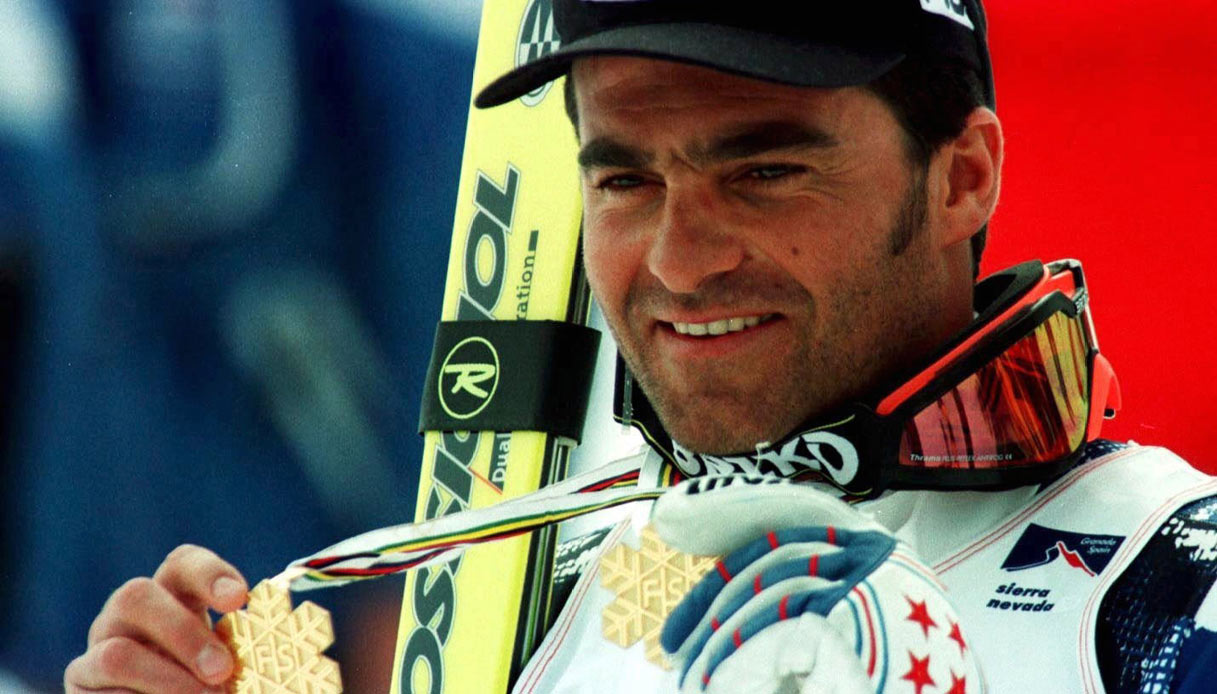
Alberto Tomba, born 19 December 1966 in San Lazzaro di Savena, is a former Italian World Cup alpine ski racer. He was the dominant technical skier, in slalom and giant slalom, in the late 1980s and 1990s. At 6 ft tall and 90 kg, his powerful build was a contrast to the lighter, more traditional technical skiers who prioritised agility over muscle. Tomba was able to take advantage of the introduction of spring-loaded ski gates, which replaced the older, solid gates in the early 1980s, by using his power to maintain a faster, more direct line through courses. He won three Olympic gold medals, two World Championships and nine World Cup season titles: four in slalom, four in giant slalom and one overall title. He was popularly called “Tomba la Bomba” (Tomba the Bomb).
Alberto Tomba, the bad boy of ski racing. The 1988 Winter Olympics in Calgary saw the birth of a new skiing star. Fans of slalom and giant slalom, known as the technical events, were used to the quiet and unassuming Swede Ingemar Stenmark, who had dominated the sport for a decade. With the arrival of “La Bomba”, it was clear that technical skiing would never be the same again.
Tomba's relationship with his well-to-do family has always been a part of his mystique. He amazed many by calling home to Italy—collect—between giant slalom runs in the 1988 Olympics, just to chat with his father and his eleven-year-old sister, Alessia.
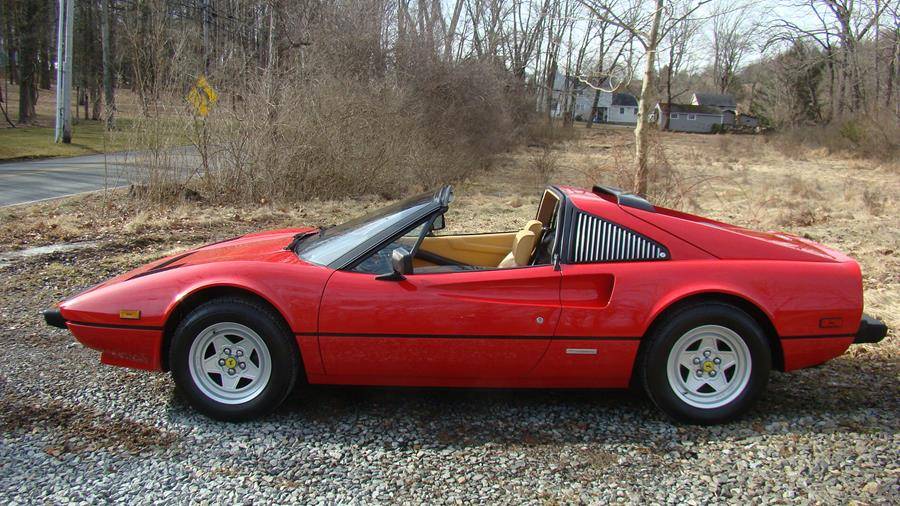
His father Franco promised him a Ferrari if he won a gold medal that year and, as he celebrated his first gold at the bottom of the slope, Alberto told his father and everyone else who was watching on TV that he wanted the car to be red.
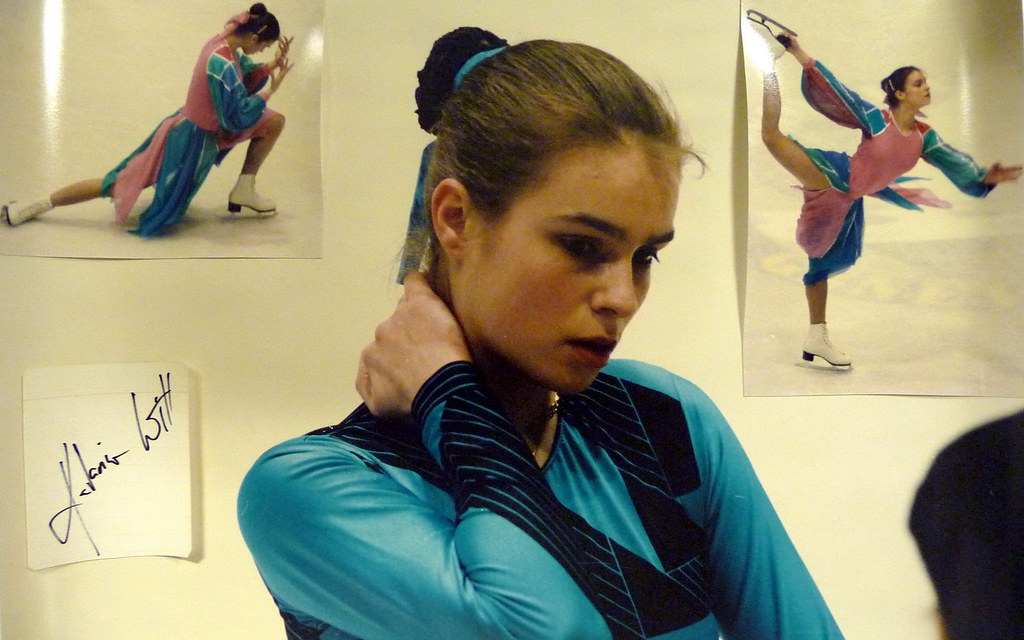
Never shy of delivering a sound bite, after taking his first gold, the 21-year-old Italian promptly also asked gold medal-winning ice skater Katarina Witt out on a date.
This and other incidents prompted some, in the early years of Tomba's career, to wonder if he was skiing because he enjoyed it or because it was what his father, a textile magnate from Bologna, wanted him to do. Certainly Alberto's father did encourage his two sons, Tomba and his older brother Marco, to ski. Although the family lived near Bologna, in a flat part of the country, Franco would drive Marco and Alberto from their sixteenth century villa an hour up into the Apennine Mountains to the small ski resort of Sestola, to watch skiing races in the winter. Then the elder Tomba would turn around, go to work for the day and come back to pick the boys up at night. On their holidays, the whole family would head for the mountains and hit the slopes. Tomba first strapped on skis at age three and he started racing at seven. At first, it looked as if Marco would be a better skier than him, but this only motivated Tomba to try harder to prove to his father that he could be a champion too. Alberto succeeded and today Marco is preparing to take over the family's clothing business. In some ways Tomba's love for his family may have held him back. At an early age, he promised his mother that he would avoid the more dangerous downhill races. He kept this promise, even though it probably costed him the World Cup in some years: it is extremely difficult to accumulate enough points to win the World Cup when one is not skiing in all of the events. Tomba did ski in the Super G for a time, but he avoided that event too, after breaking his collarbone when he fell in France in 1989.
“My father was fundamental to me,” Tomba said. “He had loved skiing ever since he went to college in Switzerland. He would drive Marco and me to the mountains at 6am and we would ski all day. Marco is one year older than me and was pretty fast, but for us skiing was only fun.” Marco did not continue ski racing after he was 14, but Alberto persevered with the help of his family. “I deeply believe that support of your parents is crucial for the growth of a young athlete.”
In the early 1980s, convention held that technical skiers needed to have a light and agile build. At 6ft and 90kg, Tomba was far from that. However, slalom technique was changing and, in 1982, spring-loaded gates were introduced into the World Cup. This meant that racers no longer needed to duck around a solid gate, but could take a straighter route down the mountain. Weight and momentum became an advantage, provided you could control the additional speed.
In 1980, at 14, Alberto qualified for the Italian team at the unofficial children’s world championships known as the Topolino. But it wasn’t until 1984 that he started to make his mark, coming fourth at the World Junior Championships in Sugarloaf, Maine. Then a win at an invitational Christmas parallel slalom at the San Siro stadium in Milan gave him the boost he needed. “I always raced to win. I just needed to mature physically to reach my full potential. In San Siro I beat racers who had been winning for years and, at that moment, I understood that winning was not just a fantasy.”
For three seasons, Tomba’s increasing power and bulk made his skiing fast but unreliable. In 1985 he won three European Cup events and the following season he raced his first World Cup at 18 in Madonna di Campiglio, although he failed to make the finish. When a competitor crashes out of a race it’s known as a Did Not Finish (DNF) and, after many more DNFs, he made a significant breakthrough in the 1985/86 season. At the World Cup in Åre, Sweden, racing from a challenging start position of number 62, he skied into an incredible sixth place.
He then scored his first World Cup podium at the age of 19, at the start of the 1986/87 season, coming third on the brutal Alta Badia giant slalom course. That qualified him for the World Championships in Crans-Montana, where his penchant for publicity also became apparent – he was famously found outside the hotel washing his teammates’ cars. “It kept me related to real life, helping me to put the ski racing into perspective.” Tomba’s bronze in the giant slalom was the only medal won by the Italian team.
The fact he could escape the mountains also helped him deal with the pressure. “Coming from Bologna helped me to grow up with a sense of humour and an ability to de-dramatise situations. To have some days disconnected from skiing gave me time to recharge to face new challenges.”
The following World Cup season, in 1987/88, Tomba’s winning streak gathered momentum and the legend was truly born.
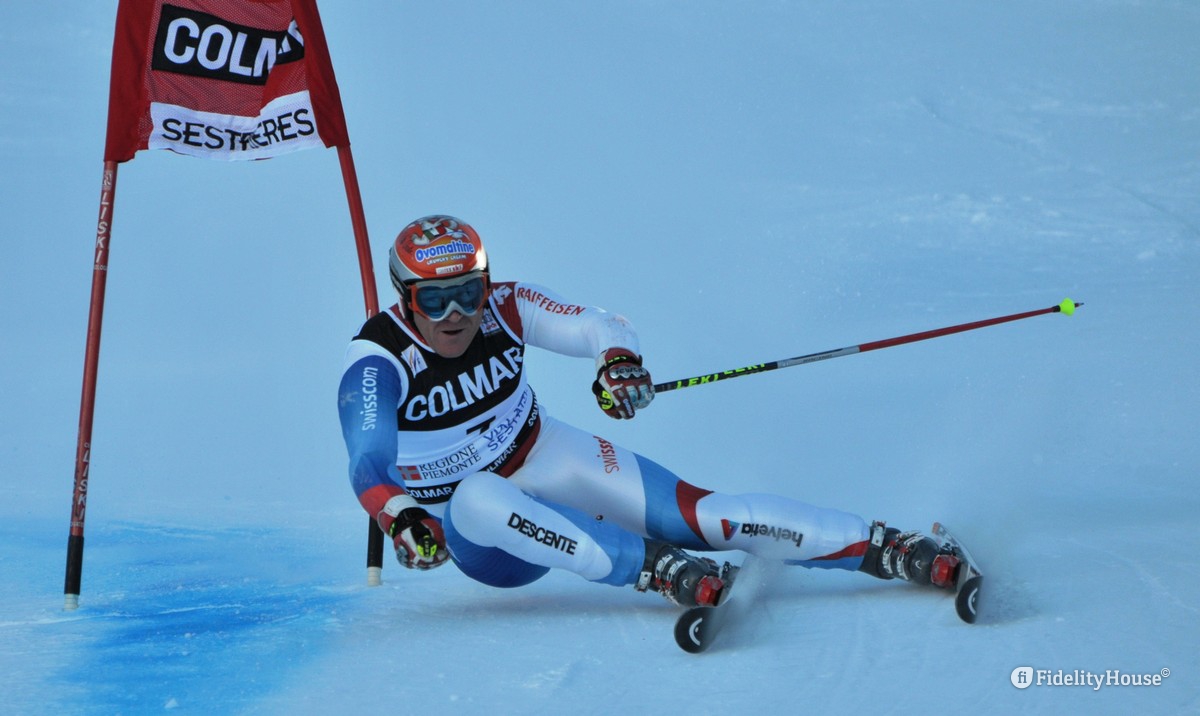
In the first race weekend, on home snow in the Italian resort of Sestriere, Tomba won the slalom comfortably, shouting “I am a beast!” as he crossed the line. He followed this up in the GS with a victory over his idol, Ingemar Stenmark, by a mere 0.09 seconds.
A win in the next GS in Alta Badia was followed by a massive victory by 1.34 seconds in the Madonna di Campiglio slalom. This time, as he crossed the line for his fourth straight victory, he shouted, “I am the new messiah of skiing!” Reminded of this, he laughs. “Did I say that really? I don’t remember, but when you arrive in the finish area, sometimes your mouth is not too well connected with your brain.”
Tomba raced the Kranjska Gora World Cup GS on his 21st birthday and recorded his first DNF of the season, among rumours that he’d overdone the celebrations the night before. It did not stop him recording his fifth win of the season in the slalom the next day. It was an Olympic year and Tomba notched up seven wins in the run up to Calgary, in February 1988. His preparation could not have been better. “I was confident about my physical shape and I was full of enthusiasm and joy, like a child in front of fireworks. Imagine, my first time at the Olympics, it was my childhood dream to race against my idols. I was determined to do my best and enjoy the moment.”
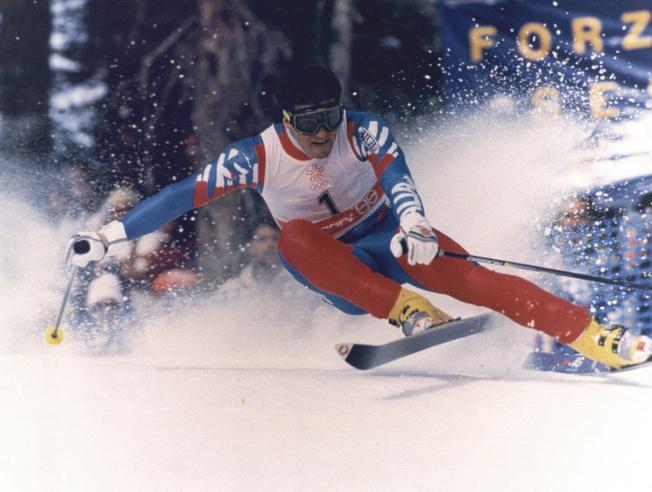
In the Calgary GS, Tomba achieved a 1.14 second lead on the first of the two runs, enough for the normally reserved Swiss downhill gold medallist Pirmin Zurbriggen to remark, “the race is over, no one can catch him.” No one did and Tomba won by over a second.
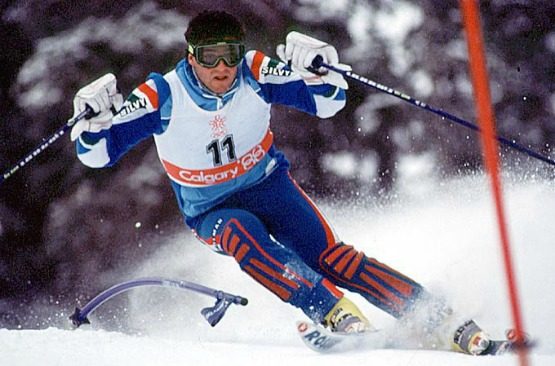
In the slalom, the leader in the first run was German skier Frank Wörndl who, although he was World Champion, had never been on a World Cup podium. In third place and 0.63 seconds down, Tomba needed to produce what BBC commentator David Vine coined as the “Tomba charge”, a blistering second run that gave him victory by a mere 0.06 seconds.
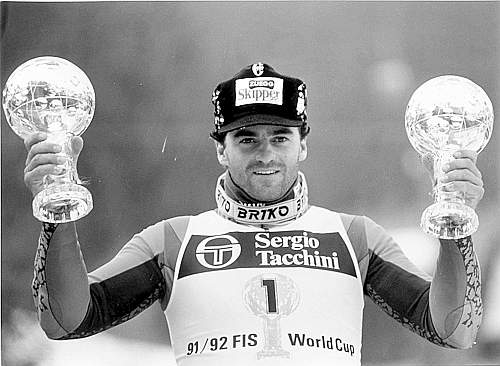
Returning home after Calgary was a special moment for Tomba. “Italy welcomed me back as a hero. It was not easy to face the pressure and maintain a normal profile, but I was also the same person that washed my colleagues’ cars and ate my mum’s pasta. This helped me to remain focused on what I love most – sport, skiing and competition.” After the 1988 Olympics, Tomba notched up two more World Cup victories, but DNFs in the GS and slalom in the finals in Saalbach meant the overall World Cup title went to Pirmin Zurbriggen.
Tomba scored just one World Cup victory in the 1989 season and left the World Championships in Vail empty-handed. The season after that, in 1990, injury sidelined him when he crashed in the Val d’Isère World Cup, breaking his collarbone. “Super-G was not my favourite discipline and that crash confirmed what I was feeling. It was the only bad injury in my career.”
But in 1992 he was back with a bang, producing seven World Cup victories prior to the Albertville Olympics. His fans said that the Games should be renamed Albertoville. At a pre-Olympic press conference he stoked the flames, saying, “I used to have a wild time with three women until 5am, but I’m getting older. In the Olympic Village here, I will live it up with five women, but only until 3am.” Now he says, “obviously it was a joke, a flippant answer to a banal question. If you don’t sleep and recharge you are not able to race at high levels and it’s almost impossible to win.”
And win he did. In the Albertville giant slalom, held on the brutal Face de Bellevarde piste, Tomba set the fastest time on both runs. Down 1.58 seconds in the first slalom run, the “Tomba charge” produced the fastest second run time, but it was only enough to take silver and he missed out on the overall title to the Swiss Paul Accola.
The next Olympics were in Lillehammer in 1994 and four World Cup victories in the run up made him favourite for gold again, but in the giant slalom he missed a gate. He was 1.84 seconds down in the slalom first run, but the “Tomba charge” leap-frogged him to silver.
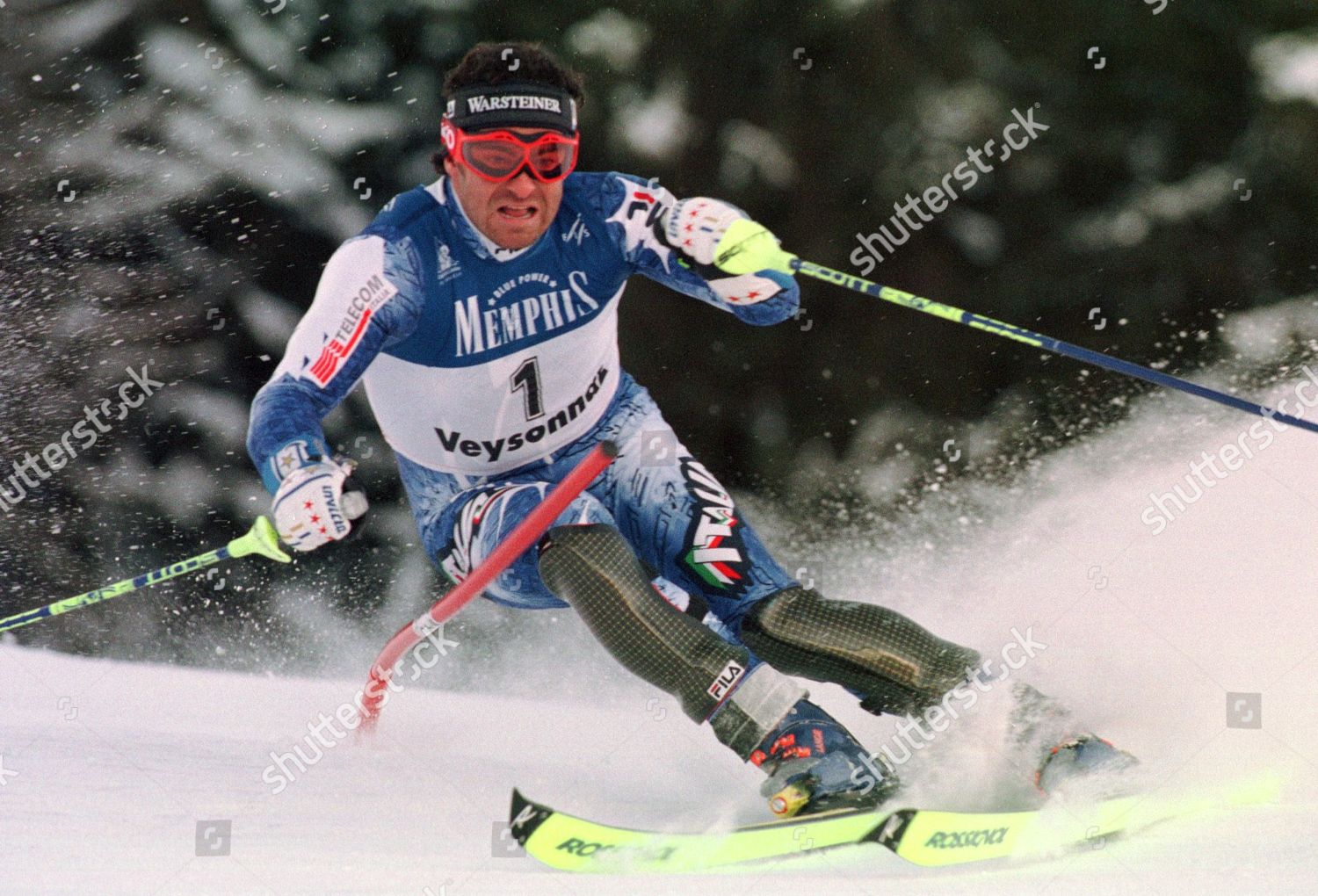
In the following season Tomba was almost unbeatable. What made him so good? “A journalist once said I had a four-wheel style of skiing,” he said. “Maybe it was my muscle power, maybe it was my capacity to memorise the course during the inspection, maybe it was the way I attacked the gates, without calculation, only focused on victory, maybe it was my capacity to face victories and defeat with the same light spirit.” Whatever it was, Tomba won the Overall World Cup title in 1995 by a massive margin.
Tomba mania was in full flow. He was the most famous sportsperson in Italy and thousands of fans flocked to each World Cup race. Then a photographer called Aldo Martinuzzi decided to cash in on his fame by publishing a naked sauna picture of Alberto taken in 1988. When Tomba spotted the photographer again from the podium in Alta Badia, he threw his trophy at him.
The controversy continued into the 1996 Sierra Nevada World Championships in Spain. “I had been misquoted in a German magazine as saying ‘we are going to race in Africa’, so when I arrived in Sierra Nevada I was greeted with a chorus of boos. But during the first run the tone changed and everybody started to support me.” Cue another Tomba charge and he took gold in the giant slalom, followed a couple of days later with gold in the slalom, after which his fans broke the fence down to lift him on to their shoulders.
The pressures of celebrity were clearly getting to the Italian skier. “In Italy they love me too much. They want to kill me. Now Alberto is tired. More than tired,” he said at the time. After a few months off, he decided to make the 1997/98 season his last.
At the 1997 World Championships in Sestriere, under huge home pressure, he crashed in the GS and needed a spectacular charge to snatch bronze in the slalom. He then failed to secure a medal at the Nagano 1998 Olympics, crashing out of the GS and withdrawing from the slalom after posting only the 17th fastest first run time.
Three weeks later, at the age of 31, Tomba drew the curtain on his ski racing career in Crans-Montana, where he won his first World Championship medal 11 years before. Blasting down the rutted, slushy slalom course, he beat the new Olympic champion Hans-Peter Buraas and 1992 Olympic champion Finn-Christian Jagge into second and third. Hoisted aloft at the finish by the two Norwegians, he launched his gloves, poles and goggles into the crowd in a clear message that there would be no comeback. He still counts skiing as one of life's pleasures.
Looking back, Tomba says he would change nothing about his ski racing career. “Every experience, good or bad, is a lesson and makes you who you are. If life is a house, then each brick is important.” Since retiring, Tomba has dedicated his life to promoting the value of sport, helping to organise junior ski races. He has been an ambassador for the Olympic committee.
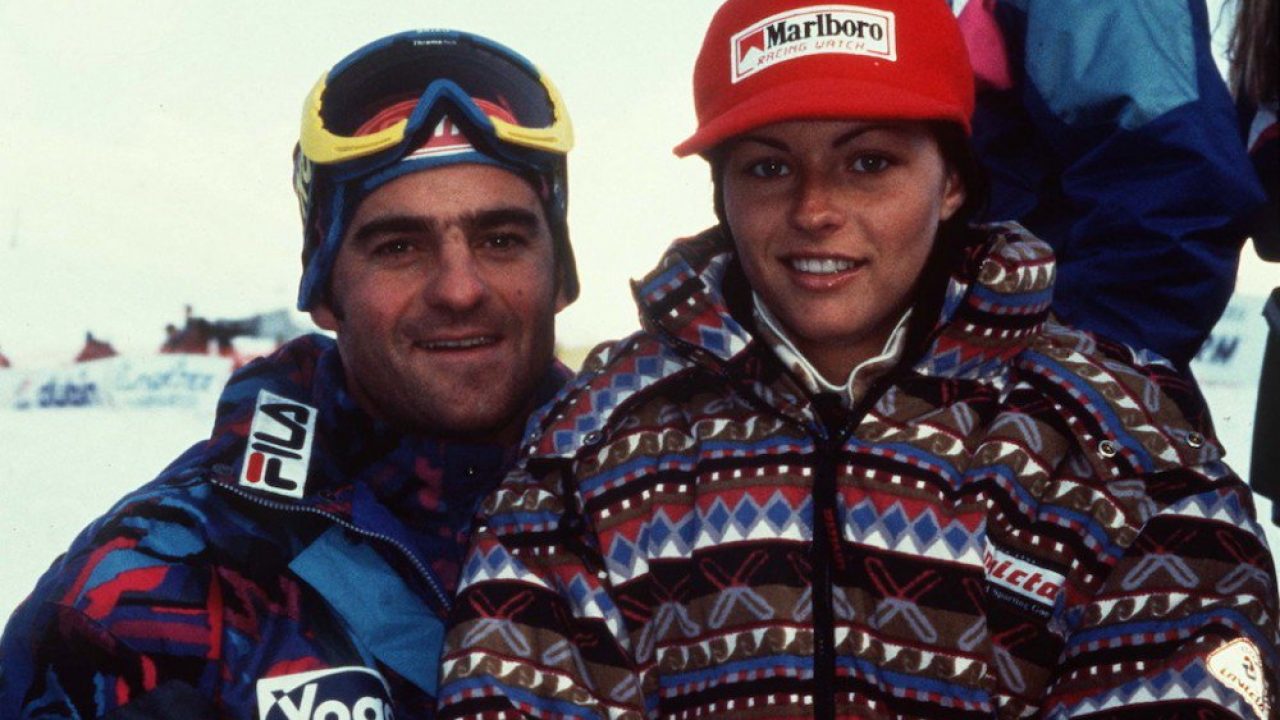
Alberto has never married. His three-year engagement to a former Miss Italy, Martina Colombari, ended in 1996 after press intrusion became too much. He is still a sporting icon in Italy, arguably the greatest ski racer of all time and unarguably the sport’s greatest showman.
Yet for such a larger-than-life character, Tomba’s pleasures take very modest forms. “I enjoy my family and friends, travelling, running and skiing. I try to help people and pass on my passion for sport to a young generation. I watch my old races and enjoy memories. And, of course, I eat, dress and drive Italian.”
Alberto Tomba said:
“I was introverted, shy. But if you win a lot you need to be extroverted, or they'll think you're arrogant.”
“All the people know Tomba, but not the real Alberto.”
“I would have won four world cups instead of one if I had run for second place, for placement.”
“Maybe I stopped too early with skiing, but I was very tired, demoralized. They told me: "rest for a couple of years, then you come back in slalom only", but I knew it would have been complicated. Until a few years ago I dreamed of skiing competitions, I woke up suddenly, saying: "I'm ready, let's go!"
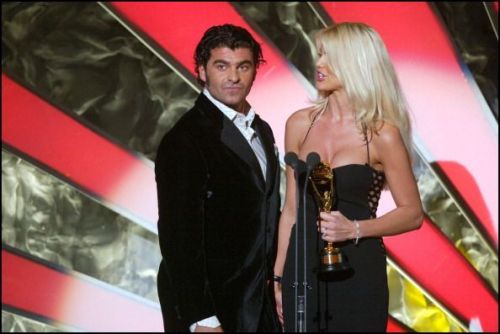
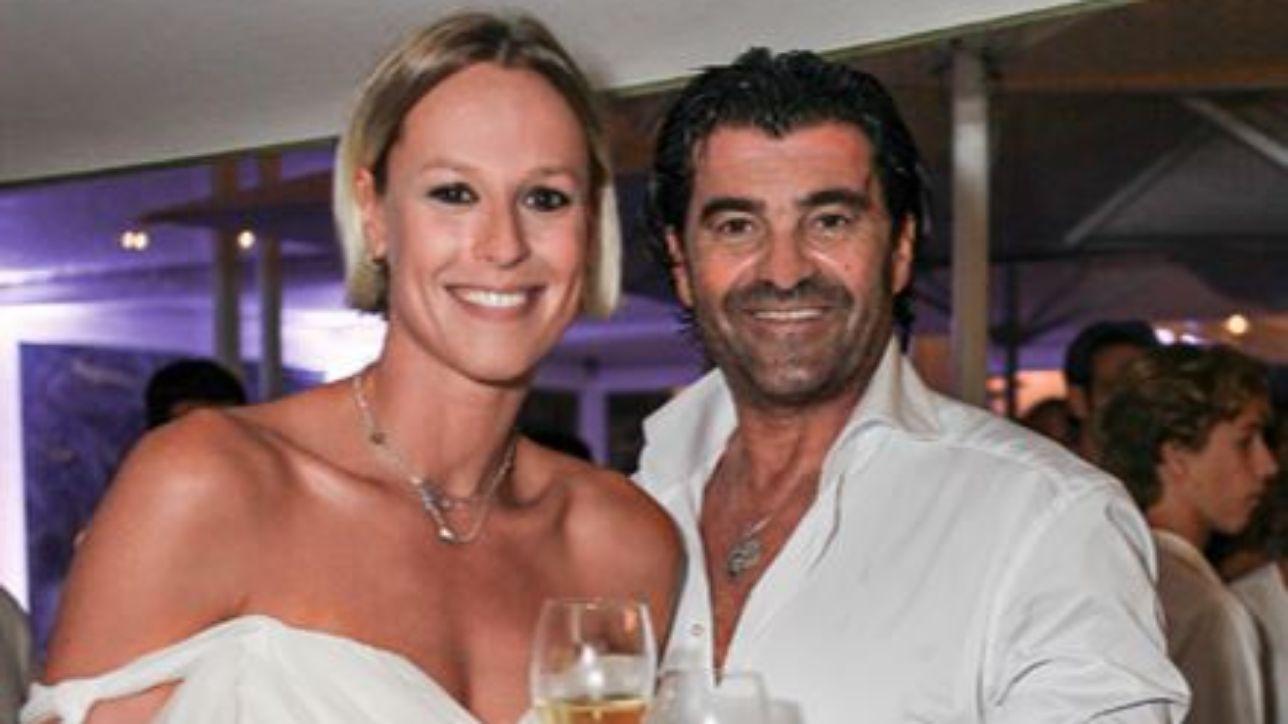
He said three things have never been missing in his life: “Ferrari, discoteca e gnocca” (Ferrari, disco and pussy), a “vitellone” triangle.
And he had his red Ferrari.
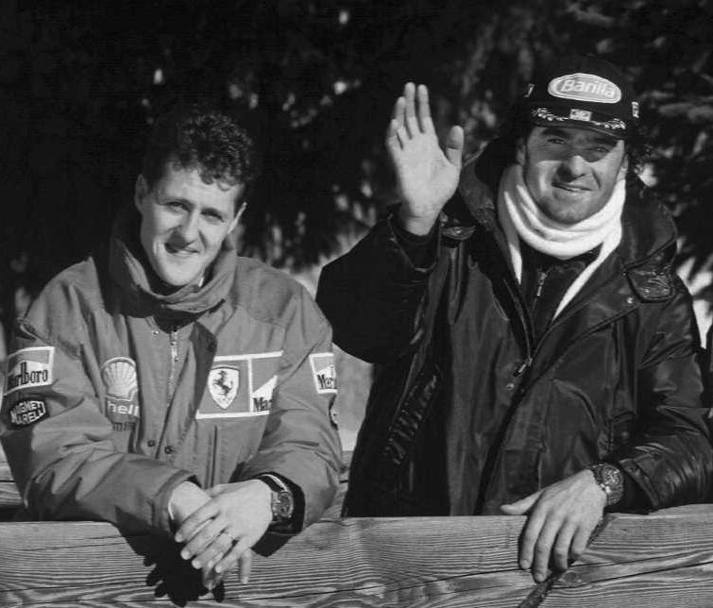
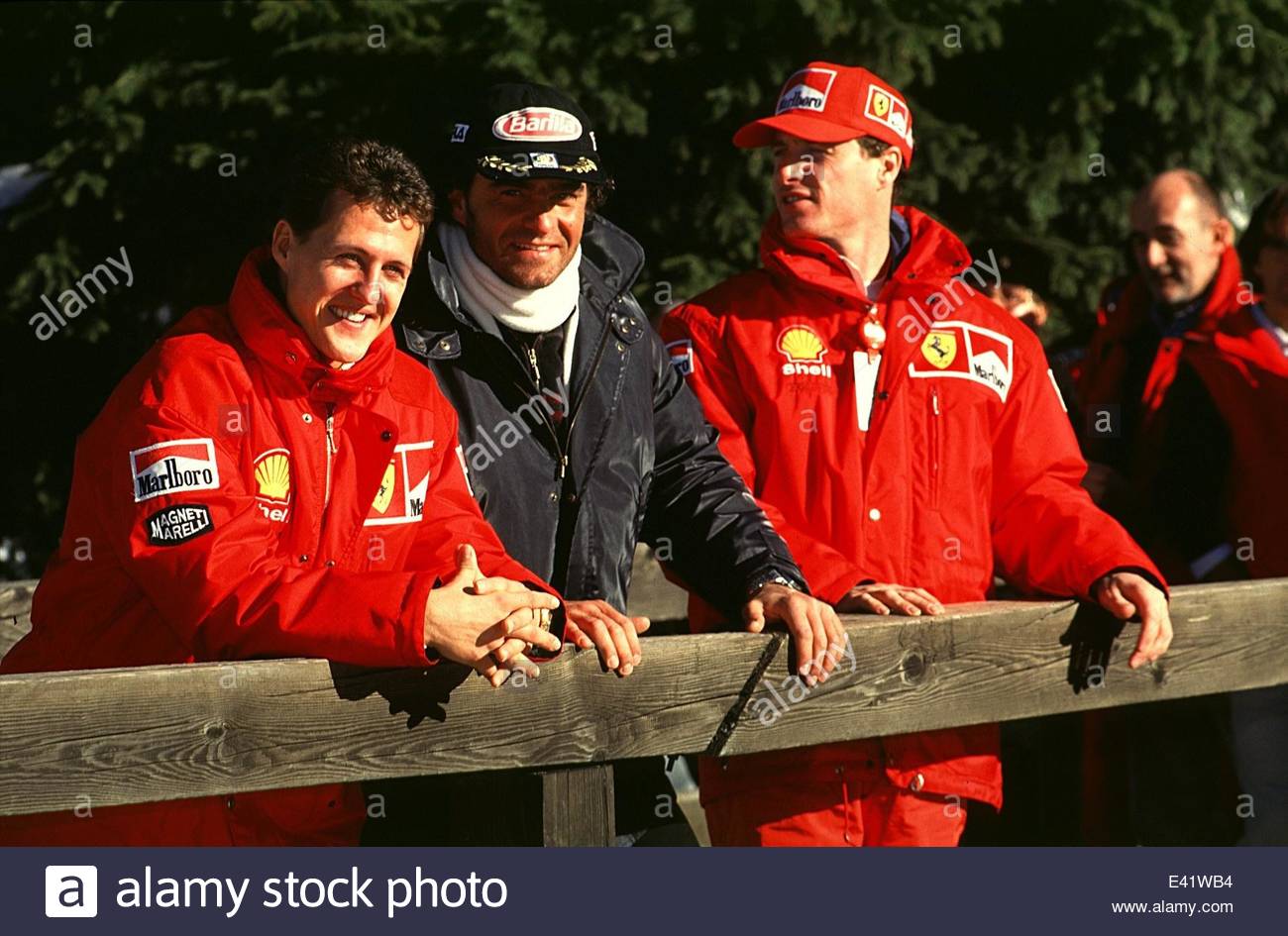
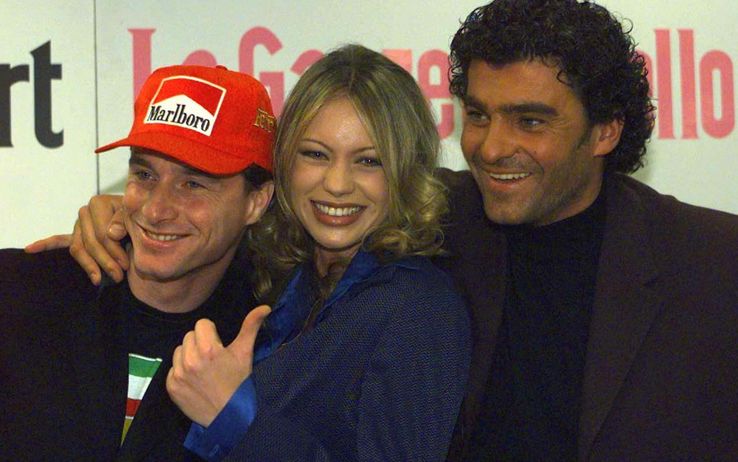
He's a fan of the Red.
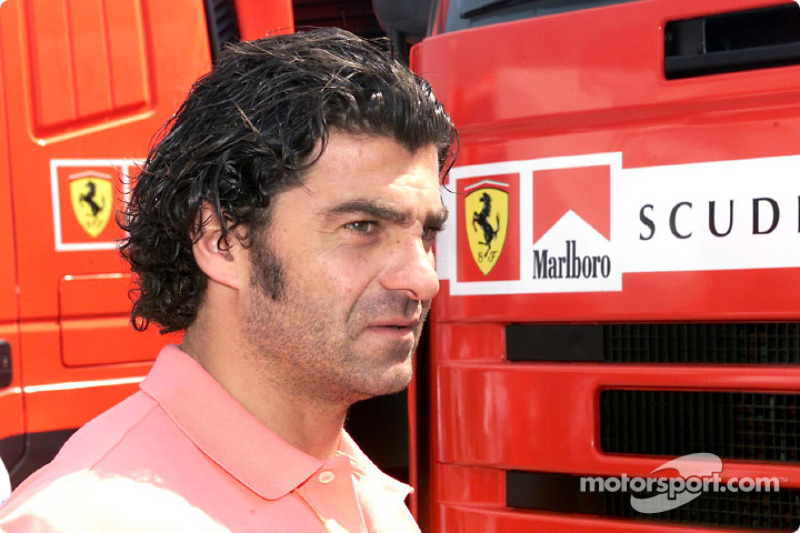
Alberto Tomba at Spanish GP - September 26th, 2011

New Ferrari: Tomba mascot, 07.02.1995, Maranello.
Three hundred people await Alesi and Berger. Tomba arrives instead. Roar and cackles of pleasure: the three hundred sway but the barriers hold up and contain the impact. Alberto enters the room and it’s as if they have injected pure adrenaline into the heart of the ceremony that Montezemolo, president of Ferrari, is about to officiate: the presentation of the latest F1 model, the 412 T2. The car is still covered by the cloth and nothing is perceived of its forms; not even Alesi and Berger are seen, something has delayed them. Montezemolo then embraces Tomba, touches and brushes him: “you don’t miss a beat, you don’t miss a beat,” he repeats and almost caresses him. Then: "touch the car, touch it a little, give it something, you are a positive one", says the President and almost adds: "you can". Tomba begins to feel a burnt smell: what’s, he’d want to understand, he got to do with this? Shouldn't the car, the 412 T2, be at the center of the whole thing? And in fact he slips away, muttering more than a little, telling that he is in a hurry to go back to Bologna, that he has back pain, that he has to pull the plug; and in fact he goes to sit on the sidelines, away from the headlights and the heart of the action. Which, now and finally, moves on the car. Montezemolo into the microphone: "I will not make proclamations, I will not say anything of what we expect," attacks the President. And he tells of the tragic year that F1 has left behind, the year of the dead and controversy; and he says that promising means having to keep, as is the custom of honest men: "I will not promise, therefore, because I don't know yet, we don't know yet, what this car will do." So what to expect? "That something more than last year will be conquered" and he won’t go further than that. He feels he can do better and he does: "if we don't win a world championship since '79, there will be a reason too, I say. And it’s a reason to be found here, in Maranello, inside Ferrari." He gets sore: "I did my best to put everyone in a position to do well, now I hope things will go accordingly. I want some more satisfaction, some real sign of commitment, for instance I want reliable engines: that give horses, of course, but above all that they always resist and perform, in all conditions." And finally, Montezemolo is burning with desire: "because in the end, let's face it: if we don't win something this year, then it's better to go all home." And what about the car, the car? It remains covered, but the veil is torn on what Montezemolo thinks: "the car is ugly. Yes, you heard it right: it is finally ugly. We made many beautiful ones and you all saw how they went; I don't like this one at all and I'm happy: if beautiful is a loser it means that ugly is a winner. Or not?" An ugly Ferrari, is it possible? So the red cloth is gone: it is removed by Berger and Larini, test driver and third driver, who in the ceremony replaces Alesi, delayed by traffic. The red cloth comes off. Was Montezemolo right? No, he had gone too far. It's all red, has a new sponsor (Telecom Italia) and it's not bad, the 412 T2, as much as it had been painted. In fact, it's not bad at all. It is anonymous, it gives little to the eye, the spectacle of the forms is not what you had imagined. Applause however and they proceed with the group photos, since Alesi has finally arrived. Pilots lined up around the 412 T2, there is also Lauda, Todt arrives. Do you shoot? No: "let Tomba come," someone calls. Alberto, who had managed to isolate himself, tries to wriggle out, this time he says it "and what have I got to do with it?” He consults with the manager, who says him: "go, what else do you want to do?" Then he wears the service smile, the Italian who wins, and goes among the drivers. Montezemolo, that if the Bolognan was thirty centimeters less wide he would have already put the helmet on his head and would have stuck him in the cockpit, forces him to something that looks so much like the laying on of hands and Tomba conforms himself, brushes, smiles, brushes again and goes away. A little annoyed: they hadn't told him, inviting him to the launch of the 412 T2, that he would end up at the core of the ceremony.
The golds and loves. Alberto Tomba, pop icon for the Olympic gold medals and the love story with Martina Colombari, lived to win: "I adore being adored," he said. For Tomba, skiing is a matter of black or white, “I win or jump (I’m out). And at the beginning I always jumped: the slalom gates during the day, out the hotel windows at night.” In 50 years of cover life, wrote Cesare Fiumi, Tomba has taken a place in the collective imagination. "I am a simple person, without existential tragedies, without sentimental trauma. I will never be one who makes culture. I prefer a Michael Jackson album to an Umberto Eco book," he admitted. His name will become a symbol of Saturdays and Sundays throughout Italy. He did not race downhill as his mother didn’t want: "better mammon than unconscious," he said. “We must always obey mothers. In a survey, some time ago, they elected me "ideal son": they were the first to love me. While there were those who called me braggart, they immediately understood that I am a naive champion, a candid used to frankness.” And the exultation after the giant of Alta Badia in 1994 with his Siberian husky Yukon showed it. He has gone through three generations as he faced the last Stenmark, Girardelli and Zurbriggen, Accola and Kjus, Aamodt and Hermann Maier. Rivals with a unique goal. "A few former opponents confessed it to me at an event," he told Corriere della Sera, "we didn't want you to retire in order to win," they said, “but beat you in race.” He is the only one who has won at least one race for eleven years in a row, the only one who attracted attention, on and off the track, even when he lost. He had started with football, always with the one on his shoulders, goalkeeper or left wing. In Calgary, at the 1988 Winter Olympics, he starts with the bib number 1 in the giant that gives him the first gold. He has the 11 instead in special slalom. He is third after the first heat. For the second, Italy stops. Miguel Bosè, from the stage of the Ariston theater in Sanremo, also interrupts the direct broadcast of the main national secular liturgy and leaves room for the five-circle live broadcast, ended up with the second Tomba’s gold medal. “At 21, it was a delirium, a dream come true very soon. This is why I enjoyed Albertville more, they were waiting for me there," he said to Repubblica. There he will win a third gold in giant slalom, for the disappointment of Girardelli and the silver in special slalom, repeated two years later in Lillehammer.
Alberto and the women - "I'm not a gossip man, even though I ended up there often and not voluntarily", he said in 2006. He ended up there mainly for the three years engagement with Martina Colombari, elected Miss Italy in 1991 with him at the Washington hotel in Milan. "I discovered what making love was. It was more interesting to try and try again later," he writes in his autobiography. "That with Martina was a story that has made history, we grew up together and a beautiful friendship remained," said Tomba, who will then crown another Miss Italy but only in the Salsomaggiore ceremony: Anna Valle in 1995. So, he stressed, “it was a delirium just having the female physiotherapist. I had all eyes on me, disco, small hours, women. Once you can do it, the second you are fucked if you leave clubs at three o'clock and you have to be up at six to train." Old-time champion, he wants to build a solid relationship. Mom, however, will still have to wait for a wedding and a "Tombino" (small Tomba).
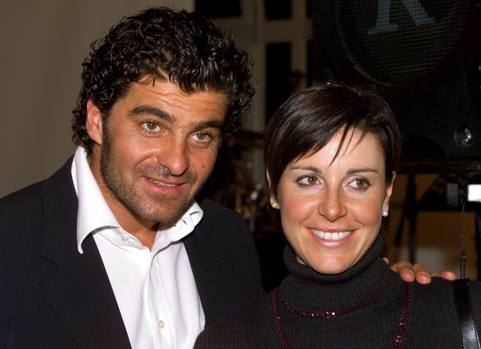
Newspapers and paparazzi dig into the private of the national Alberto, linger over a love story with Deborah Compagnoni which is however, according to Tomba, a "mini-flirt".
The Bolognan is not interested in cinema or television. "I was born an athlete, the media exposure was a consequence (sometimes hard to bear)," he confesses. But he is not bored, he writes in the “Corriere della Sera”. "Journeys, events, promotion of sporting values, participation in World Cups and Olympics with different roles, in short, I am not bored. And I am 50...” “I know how to be with friends, I am very grateful to life that has been generous with me. I have had luck, loves, successes."
“I don't go skiing anymore, it makes me sad. But I'm going back to the snow,” by Antonio D’Orrico - February 3, 2014
Do you still watch the videos of your races? «I see them at home when there are friends or those of the fan club. We are in the tavern and I turn on the TV. I see the Olympics, the Sierra Nevada World Cup and in the end, yes, you are moved. Going back to review the victories is not sad, it’s beautiful».
There is also, and I didn’t think it existed, the video of your first victory at the Montagnetta of San Siro, the parallel race (with the two skiers descending side by side) that was held in Milan. "Exactly thirty years ago, December 23, 1984." You were a boy.
«A kid.»
A kid that beat them all. The champions of the Italian national ski team defeated, one by one, by a young man from team B.
“I remember I was just eighteen. You can imagine what an event, what a thing. In team A I remember that there were Edalini, Tonazzi and Robert Erlacher, who was the champion against whom I won in the final. Great day, I had the number 9 on the bib.”
You are addicted to numbers. Do they really count so much?
«Yes, the number is crazy, because I started with number 9 that parallel in San Siro and I finished with number 9 in Crans Montana in 1998. My numbers are the odd ones. One, three, seven, nine, eleven".
And the even numbers?
«They are not good. The only exception is the 6."
Then there was another propitiatory rite: you had a long beard in the first run and then you shaved it off in the second. Why?
"To wake me up a little, to change look, image. At the World Championships in Sestriere 1997 I was a mess, I didn't want to do the second run. They insisted. "Go, Alberto." I had a temperature of 38, 39. So I changed the suit, the boots, I shaved, I came back new, even if I still wasn't feeling well. I pumped myself up and I finished third from seventh that I was, conquering the bronze.»
And the end of your career also had a ritual: you quitted in Crans Montana, where you had won the first bronze at the 1987 World Cup. According to many, however, you could have continued and won again. Is that it?
«I could have taken a two-year break and then started again but at the moment I was tired, stressed.»
Tired of skiing or something else?
«Of everything. All those people behind me. I couldn't move. From 1996 onwards it was a delusion. I couldn’t be calm, peaceful. I had everyone against me, people who wanted to make themselves big behind my back. And so it ended up with whistles and flasks.»
Whistles and flasks?
"I'm referring to the taxman, the history of unpaid taxes. Managing those things at twenty is not easy, there was no dad behind. An athlete has to trust somebody. I trusted them and amen. I won because I wasn't in the office, I wasn't following the commercial part, I was following the technical part. Footballers, golfers, tennis players are more professional than skiers, they look after their earnings. In my opinion, for an athlete this is not a good, he has to separate the two things. There must be someone who thinks about it, you have to think about sport."
Another of your characteristics was that of making statements before the race announcing that you would win.
«Oh my God, in skiing you can't do any program because luck counts a lot. I didn't make any proclamation, I simply said: "today I feel strong." I didn't say, "I've already won." It was the reporters who exaggerated to bring out the character. Actually, certain things happened because I was from Bologna.»
In what sense?
«In the sense that I was a city dweller and the other skiers were mountain people, introverted, silent, often gloomy. I was playing, joking, but was often misunderstood. There were always those who noticed and pointed out something. They said that Marc Girardelli had gone to bed at nine in the evening while I at nine in the morning had returned from a few wild nights. Always this whole girl thing. If I had gone for girls all the time as they thought I wouldn't have won so much. "Tomba nights, Tomba nights", they were obsessed. As if there weren't also afternoons. In my opinion, it depended on the fact that I was from the city, that I had a darker complexion, that I put gel in my hair. I was different from the blond mountaineer, blue-eyed. For some people I was a Moroccan. They called me Scipione the African, they called me mafioso, terún."
Terún a person from Bologna? It’s crazy. Let's move on to something else, you fought against the wrong regulations, the skiing system, the Austro-Swiss power group that was at the top of the world federation. This battle reminds me of Maradona's battle against the football establishment.
«The big names in sports have their say even if what they say is always misrepresented. They think we do it for protagonism. It is not so. If one has a good idea, why not propose it? For example, why do you have to do ski competitions at nine in the morning when it’s minus thirty degrees outside? But please. I said: can we do the first run at eleven or noon, and the second at two? They replied that I said it because I liked waking up late. Another madness. Previously, the calendar included a race in Switzerland, another in Austria and then you returned to Switzerland. Now they have decided to do the two Swiss races together as I proposed. It took so long to figure it out? My rebellion was all here."
Tomba, at the moment I got a terrible suspicion: but did you like the snow?
«Eeeh, like, like. When I began to understand what life was waiting for me it was not easy. My brother in fact greeted us: "thank you dad, good bye Alberto, good luck", because he realized the sacrifices, the cold, the schedules. He had no grit, but he got more style than me. Grit is important. Whatever sport I practiced I put my soul into."
Of snow, there is not only one. Do you confirm this?
«In Japan the snow varied a lot, even in Sochi it is like this. It was just like back home in the Apennines. The snow changes according to winds and temperature. There is the foehn snow, there is the minus twenty degrees snow. That book is right: there are many snows. There is the paciocca, for instance, there is the chalky one, when it is cold, that makes knick knick when you walk on it."
But I feel like you love the sea better than the mountain. I have been told you are an expert and reckless diver.
«I like to dive, even from a height. But also the sea for me has been my life indeed, it is linked to skiing. As kids my father took me and my brother to Elba and, when the sea was really calm, he used to make us do some great skiing with the dinghy. Dad also made us ride motorbikes. I've done a lot of motocross. And I was reckless there too. Do you remember they said I was a coward because I was not doing the downhill but only the giant and the slalom? It was a lie. I like to take risks. In motocross I did crazy things and at the sea I dived from a hight of ten meters. And then, suddenly, I became a rabbit in terror of the downhill? It is not even true that it was my mom who forbade me to do the downhills because she was afraid that I would hurt myself (as journalists wrote accusing me of being a mammon). It was for a different reason. I preferred to win in giant and slalom and not to risk in downhills at 120, 140 km per hour, where you just have some fog, a sudden change in the weather and you find yourself crash-landing, throwing away your season.”
But if you had done it, would you have been the greatest even in the downhill?
"Yes. I really liked jumping at 120 km per hour."
You are the third in the history after Stenmark and Hermann Maier, are you ok with this ranking?
"If you take the image and popularity into account, I consider myself the first. If you look at the number of races, the first one is Stenmark. If one looks at the physical, the number one is Maier. But his is a built physique, the physique of one who has worked hard on the muscles. Maier is like Ivan Drago, Rocky Balboa's opponent boxer. He is not a natural but an artificial athlete.»
Speaking of physique, Mario Cotelli, the technical director of the Valanga Azzurra, wrote that the secret of your strength depended on an extraordinary combination: you have a statuesque physique and female-dancer feet that gave you a particular sensitivity while skiing.
«I actually have small feet. My shoe size is 43, the other skiers had numbers like 47."
The world of skiing was changed a lot by the Tomba phenomenon. It was like when in tennis we switched from strictly white shirts and shorts to coloured ones, we ran from the almost religious silence of the spectators to the cheering of the stadium. You have transformed the ski convent into a circus, into an arena, you have given that almost penitential, hermitic world a spectacular glamor, you have made it pass from alpine choirs to rock and roll. But I have the impression that, since you stopped skiing, it has gone back.
"You're right, the numbers speak, the statistics. If four thousand go to see a race today, in my time forty thousand came. If today there are four journalists on the track, when I ran there were forty. With me and Deborah Compagnoni (let's not forget her) skiing has had a popularity that it has never had. It was the good times when in Italy I took away the pages of newspapers to football, something never seen, the good times when Rai even stopped the Sanremo festival to follow my race live at the Calgary Olympics. What has never happened and which, perhaps, will never happen again.»
You have made skiing nationalpopular.
"And, in fact, there was love and hate. The love for the medals I won (and for how I won them) and the hatred for my character, my lifestyle, the Ferraris, the discos, the taxes. But I understand journalists, I always won so I was no longer in the news and then, to mix things up a little bit, they would stick to everything and attack me. I have been exalted, condemned, praised, criticized. Yet I have never made replies or denials even if everything has been written about me. I let it go and so today's Italians still believe in what was written then, in the image they made me. Latin lover. And what it means? I'm from Bologna, I was driving a Ferrari, I had Miss Italy by my side, I like noodles. What do I have to do? Do I have to kill myself? What's wrong? The thing is, I should have been going around not with the bodyguard but with the lawyer, a lawyer who was careful that someone didn’t get clever. Maybe an accountant lawyer. Do you know the truth? Is that it’s more news the wedding than the funeral."
If we want to talk badly about journalists I volunteer. But there were also journalists who adored you, I think of the beautiful pieces about you by Leonardo Coen. And even if they sometimes made fun of you, they did it in a polite way like my former classmate Cesare Fiumi, author of a piece of anthology that began like this: “at first he was above all the verb, which was not always conjugated with the subject by the athlete." And, if you allow me to self-quote, I myself once wrote that sometimes you remembered the carabinieri of the jokes (those for whom they print the word "Carabinieri" on the side of the car because if not, instead of entering the doors, they enter the trunk) and therefore he was engaged to Martina Colombari because she wore the band with Miss Italy written on it.
«And you were wrong. I liked Martina right away because she was from Romagna not because she was Miss Italy. This is pure truth. Ours was a couple of which people talked about a lot, still talking about it today. And, however, at the end you get tired of hearing some adjectives that have been tied to me for years: Gascon, sparkling, mounted. Now they say that I have become a boar, a trunk. And instead, no. Take a look at me. I'm still in shape and it's sixteen years since I stopped competing.»
Is it true that you have not been skiing properly since you retired?
"It's true."
And why?
«My mother always says that when you come back you are moved, you feel sad because the beautiful moments have passed. I don't want to come back to rehash.»
Please go back just a moment. Is it true that the worst moment was the start, when you are standing at the gates, how do you say it in jargon?
"There is nothing more terrible. You are alone, there is the countdown, you know it's your turn, you have in your ears the sound, tuuu, tuuu, tuuu, which scans the missing seconds, you have cameras in your face, you have the timekeepers by your side, you have behind you coaches, then there's the scream of the crowd. Afterwards, when you finally start, the adrenaline is released all at once but up until a moment before no no no, you feel yourself die, you are in front of a ravine and you have to jump in. Those who see you sitting at home in front of TV have no idea of how cold it is, of the frost you feel."
In 2006, for the 110 years of the Gazzetta, Alberto Tomba wrote us: “the Gazzetta did not start well with me: it did not find the courage to write my surname in the title when I won the Christmas Parallel in Milan, but it redeemed itself widely. I remember that first page during the '92 Albertville games, King and Queen, when Compagnoni and I, winning the same day super-G and giant, managed for one day to get the football out of the first page. To the Gazzetta I just have to say thank you, it always followed me with attention and passion, not paying too much attention to gossip. A serious newspaper that has in itself the culture of true sport.” Now it is we who pay him homage with this blob that summarizes the declarations of a career that has entered the sporting legend, both Italian and worldwide.
Here is how Gianni Merlo talked about that eighteen year old guy: “Tomba is doing privately the fifth year of accounting. He started skiing in Cortina where his father, a cloth merchant, took him when he was a boy. He is enrolled in the Cai of Modena, that is, he emigrated to make the most competitive agonism. In the team they call him “Grease”, because he has a certain passion for brilliantine. He is a well-groomed boy, a city dweller to the root of his hair." (December 24, 1984)
“I have never endured monotony. After all, if I make sacrifices in winter, then in April and May, when the activity is over, I can let off steam. I want to do something different, something special. I want to do something I can tell my children one day. Up to 28-30 years I can continue on this path, living emotions and experiences that not everyone can do." (December 31, 1986)
"I thank that pole that hit me hard in the head just before the end of the first run, it gave me a wake-up call." (November 30, 1987)
"Years ago I ate a lot more: I once devoured six steaks, one after another. Now I contain myself. But that of the table remains one of my favourite moments. I am 1.82 tall and my weigh is 90 kilos: if I do not eat, I fall unconscious. In fact, I haven't eaten in two days and I feel stomach cramps." (December 1, 1987)
"It is hard to be able to win the cup because I don't do downhills and to win the cup you need a lot of points." (December 2, 1987)
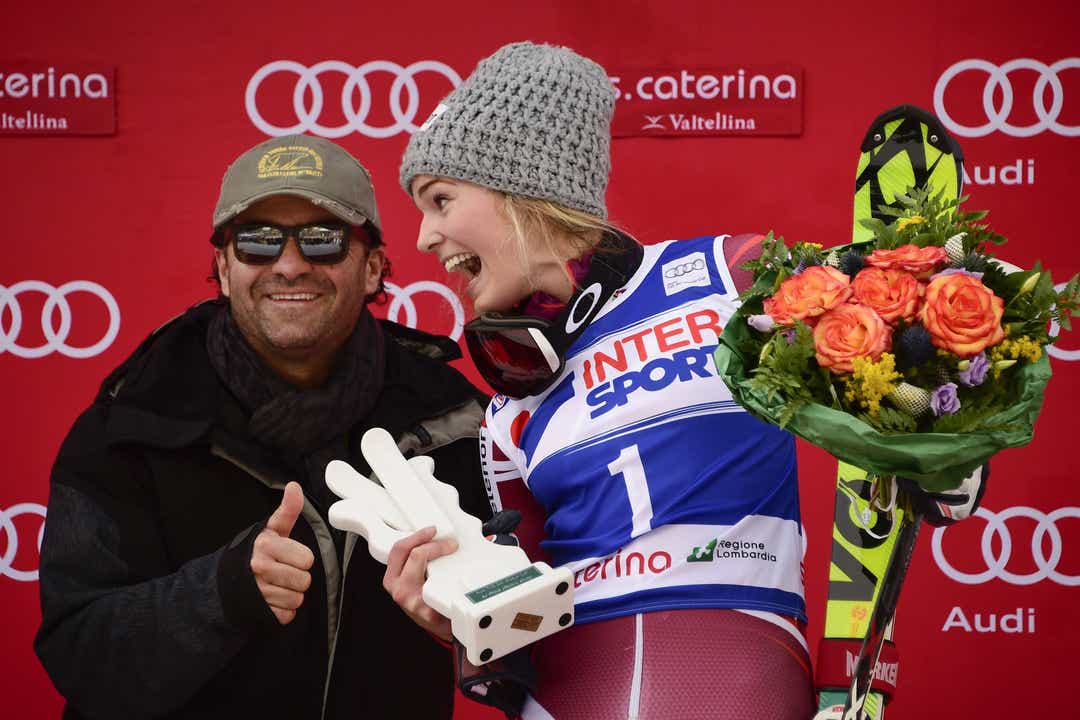
“In my opinion, women can do athletics, skating, tennis, volleyball, because in this way they can still be attractive. Certainly not the skiers or those who play football with those big calves..." (December 15, 1987)
"As a child he liked to draw. And he was also quite good, we had some of his drawings framed and nobody believes he made them. He drew what he saw: the trees, the houses, the countryside, he was crazy about comics and Tarzan's film. Then he was very ingenious with electronic games, in Milano Marittima he gathered piles of amazed people around him in the game room because he could do very difficult things, he immediately understood how to maneuver those infernal machines. And he was also a winner there. Even at school he was doing very well (the Salesians educated him well...); he stopped in the fifth year of geometry but he says that sooner or later he will take his diploma and I'm sure of it." (Mother Maria Grazia, 22 January 1988)
What do you give yourself in case of gold? "A swimming pool in the home park." (The eve of the super-G at the Calgary games, February 21, 1988)
“With cars and motorbikes you don't mess around. When you are young you cannot understand certain things. I think it is better to wait a little before driving important cars. I really like Ferrari, but it's premature for my age. I know this confession will amaze you, but that’s what I think." (April 21, 1988)
"This great summer began in Hawaii, after the Calgary Olympics in February, when the Americans noticed me. I was the Bomb. Now I hate this comparison, please leave Tomba the Bomb alone, my name is only Alberto. Many were then surprised by my victories after the Games, many confirmed it to me. In the heat a few months ago, at the seaside in Milano Marittima which is practically my home, I realized that, as soon as I went around, I had them all over me. The same thing happened when I was in Calabria in training and, before then, in the five days of relaxation in Vulcano. There was confusion everywhere. Maybe only Africa would have saved me..." (Winter 1988)
"Calm is a virtue... I’m not in a hurry... What’s important is to be on time on arrival!" (Winter 1988)
“Maradona came to Italy and many kneel before him. There are more fanatics in football than in skiing. No, I don't envy him, I’m fine with that. But I want to challenge him because I'm not bad at playing football, I want to see him on skis ... Here, I challenge you Maradona" (December 31, 1988)
"You keep bothering me with the story that I'm fat. But do you realize that the only time that there’s something to worry about will be when you will see me skinny, thin… Then yes, it means that something’s wrong. Which is why I don’t believe we should pick on me if I have a few extra pounds of health! Do you want to see me sad? But do you realize that I am young, that I have plenty of time left before I grow old?” (1989)
"I read that I make five million here, eight million there ... All easy. I'm here with friends to catch cold when I could go somewhere else to enjoy all that dough. The reality is quite different. There are rules that I have to respect and that I respect, so let's not talk about figures, that's not really the case, especially because they don't reflect reality. In these days you see my fat face in many advertisements? Well, most of them are companies of the ski pool and that money goes to the Federation firstly." (1989)
"I was in Milano Marittima and I took the carabiniere plunge... A backflip in a dry pool... No, I’m just kidding, the water was there but it was too shallow for my weight. If I had been a twig I wouldn’t have gotten a scratch but I am a big carabiniere and I hit hard my left heel. A terrible pain. I wasted a month to get it fixed." (He explains his heel injury, August 10, 1989)
“I believe that in the future it will be needed to change the rule that regulates the starts. Let me explain. Now more than ever the starting number has become a determining factor. In fact, you have seen that with one or other low numbers you already have half a win in your pocket. So it would be right, for example, to allow the top five of the points classification drawn up by the FIS, that is the absolute best in the specialty, to choose the starting bib to better balance the fight." (December 24, 1990)
“Now the wins are more difficult. Because, compared to three or four years ago, I have many things to think about that I didn't have before. On the other hand I am more mature and I have more experience. Before, I just went down full blast. Now I think more about the races. I know that, when I make no mistakes, it is almost certain that I win or that I am close to it. From the technical point of view the novelty that I brought in giant is the helmet. The blows in the head hurt and I was tired of taking them. Now many people use it and you keep a different line, which passes closer to the pole. Then I introduced giant clothing also in the slalom." (November 26, 1991)
“Even years are good years for me. In the Olympics I always went well and always badly at the World Cups. I don't see why I shouldn't believe in these things.” (October 7, 1993)
"I told my men between the two runs: I go to my room for a moment to get the turbo that I had forgotten before. What is certain is that, if they continue tracing like this first heat, in the year 2000 we will go straight. We need more demanding slopes to create interest among the people, otherwise our risks of becoming a monotonous spectacle." (In the 2nd heat of the giant of Tignes, comeback from 21st to 4th final place, 4 December 1994)
“Twenty-eight years are many or few. I don’t know. It hurts to start counting them because you look back and realize how quickly time has passed. For now I am destined to live gypsy birthdays. Between races. I never have time for anything official, like when I was 18 ... In addition I was born too close to Christmas, so the gift is always cumulative." (December 19, 1994)
“As a child I was a downhill skier. Right here, in Corno alle Scale, I won the downhill at the Youth Games. But I am fond of my own skin. I started to think. And now that they make you sign...” (December 28, 1994)
“It’s not like it used to be. The polyvalents are finished. You need specialization. And I feel good in slalom." (December 28, 1994)
Gianluca Vialli, the famous footballer: "listen, they told us that with the bench press you were able to move, pushing with your legs, 520 kilos! Not even two of us managed to reach this record, pushing together. You have two incredible pistons. But is it all true?" "It's true, but they were jobs I did last year, now we have changed something, working more on speed, given that the strength base was now consolidated. Maybe you got off lucky because, if when I was a kid an onrushing goalkeeper had almost killed my knee, maybe now I would be in Serie A and maybe in the national team, as a bomber. I always played with a 1 on my back, either goalkeeper or left wing." (Meeting with Vialli at Sestriere on February 5, 1995)
"Is it possible that I never have the right to a modicum of private life? Does everything I do become a scandal? It is an impossible life. I had to leave the hotel in Porto San Giorgio where I was in this period of athletic training because I always had five paparazzi waiting for me with cameras and flashes ready to shoot." (July 31, 1995 after a paparazzo complaint)
At the beginning of '97, on the eve of the World Championships in Sestriere, the main character of the movie The Cyclone, Lorena Forteza, unleashes a lot of fuss for the alleged Tomba’s advances: "if she had been really well-known she wouldn’t have done it... But, close to a great event, someone always comes up. They invent something. I have to watch my front, side, back, all sides..." (February 2, 1997)
“Why doesn't anyone ever put him in my shoes? I'm not made of iron. I wanted to make a great Olympiad. I wanted to die. I arrived here as a champion and I leave as a...., the rhyme is easy. Now I'm going home and they will dig again into my personal business. I know what will happen... In your opinion does that feel right.” (February 23, 1998 after the disappointment at the Nagano Games)
"I was a kid, it was all a game,” he says, “and every time I invented a joke."Il tre vien da sé" (the three comes by itself), "la sesta è una festa" (the sixth is a party), "l'ottava è la mia schiava” (the eighth is my slave). "Maybe I didn’t realize what I was doing, I didn't feel that attention and interests were growing around me." (December 28, 1998)
«I'm on the bench, if anybody can’t handle it, the old guy gets up and takes his place... Short skis? I tried them last year at Sestriere while you were at the Olympics. I did 4 laps without errors and I had fun. But I didn't have a Rocca before me to understand how much I can be worth five years after retiring. Return? Well, there are still old guys around like Aamodt and Kjus. Try to talk to the international federation: if they don't let me start with the number 100...» (February 11, 2003)
«Marriage is an important step, to be carefully evaluated. I have seen too many shipwrecked couples. I would like to build a real, unique couple which has in trust its concrete. Am I asking too much? Am I ancient? No, I believe in values.» (December 19, 2006)
"Mameli 's anthem must be deserved, better when you win. But, perhaps, the younger ones can boost themselves. But still, alone is not enough, you have to feel Italian at any time and, above all, when you wear a national team shirt.» (March 18, 2011)
An anticipated birthday party at the Gazzetta for the Bolognan. December 16, 2016 - Milan. Tomba turns fifty. "Finally I am the real Alberto." 50 like his cup hits (but for him they are 51). "But the 50 years of now are the 40 than once," he says as soon as he arrived and, looking at him in trousers and denim shirt, dry and smiling as one at peace with himself, it seems just like that.
Do you still ski?
«At events, very little else. As soon as I speak, they recognize me and it's over."
Do you remember everything about your races?
"Yes, as if it were now."
That way of sharing joy with the public has remained unique.
«When I was sure, I exulted before the finish line and then I stopped at the parterre to celebrate, even when they beat me as in Sestriere when Aamodt beat me for a few cents. As I have won 50 races but I have lost plenty of them, some just given away.»
Are you still superstitious?
"I had invented the nursery rhyme for the wins, I always wore the bracelet with the knots, the one that when it breaks down they say your dreams come true. I am superstitious in the right dosage. I remember that, before an Adelboden giant, it got out in a newspaper “Tomba to attack” and I lost the binding (in Italian attacco)."
It's time for Italian races. What do you say about Alta Badia?
«I test you. How many races have I won on Gran Risa? Four, yes. For us azzurri (Blues) it was a classic, we trained there. You could not betray. I've always liked skiing on our Dolomites, on the Italian slopes.»
Do you like today’s skiing?
«Technically: much shorter, waisted. But much less followed.»
Who do you follow of our blues?
«Everyone, Fill and Goggia have been very good. After the Sestriere I sent a message to Sofia: “you are now second, I won't tell you anything..."»
And do you always give advice to Razzoli?
«He is already pretty grown up, I had already stopped at his age... Seriously, I always send a few messages before the races. But I could never coach.»
Ingemar Stenmark
Watching Ingemar Stenmark descending was an absolute show of coordination, style, elegance, precision, speed and determination. He literally flew between poles. There was no pathos of the race because it was known that he would certainly win, so one could focus on observing his movements. And it was something strong. The sublime dance of a fawn in the woods. He seemed to be a forest animal, so much he was seen at ease in that environment. Was born for this Ingemar, for skiing. And no one has ever moved like this between poles, just perfect in a mix of continuous thrust and absolute control. He was one with skis. Very reduced margins of error, he annihilated opponents. The greatest skier of all time. 19-year-old protagonist of an epic parallel won by Gustavo Thoeni.
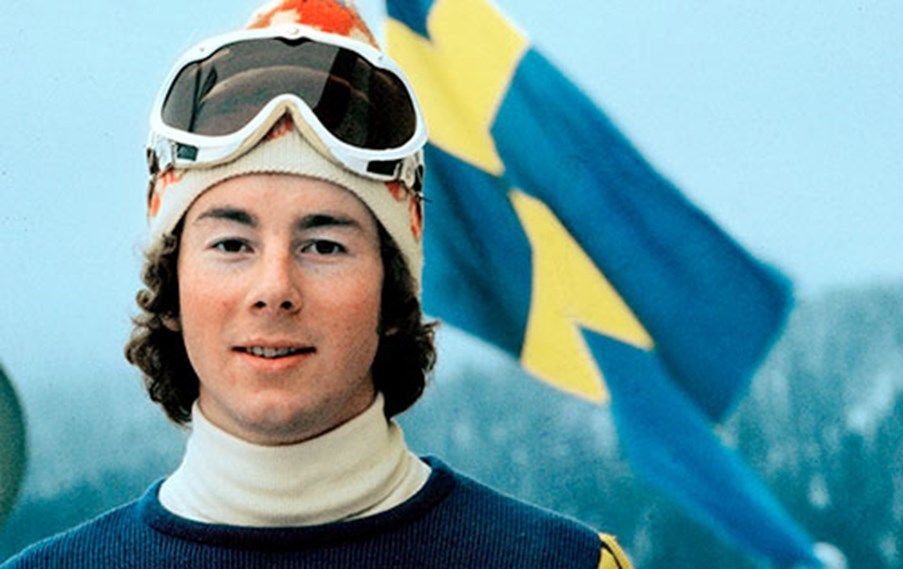
Jan Ingemar Stenmark, born 18 March 1956, is a former World Cup alpine ski racer from Sweden. He is regarded as one of the most prominent Swedish athletes ever and as the greatest slalom and giant slalom specialist of all time. He competed for Tärna IK Fjällvinden.

Born in Joesjö, Storuman Municipality, Lapland, Stenmark's family moved to Tärnaby, near Norway, when Ingemar was four years old. He began skiing at the age of five and won his first national competition at age eight.
Stenmark made his World Cup debut in December 1973, at age 17. He has won more international races than any other alpine skier to date: he took 86 World Cup wins (46 giant slaloms and 40 slaloms). He won three straight World Cup titles (1976–78). He won only in the two technical disciplines: slalom and giant slalom (the other events are downhill, super-G, first run in December 1982, and combined). He rarely competed in the other disciplines, as he was not comfortable with speeds in excess of 120 km/h (75 mph). He still has the record for the biggest win-margin in a World Cup alpine race: 4,06 seconds ahead of 2nd placed Bojan Križaj, in Jasna, on 4 February 1979. Stenmark was known as a quiet champion, with short but polite responses to media questions.
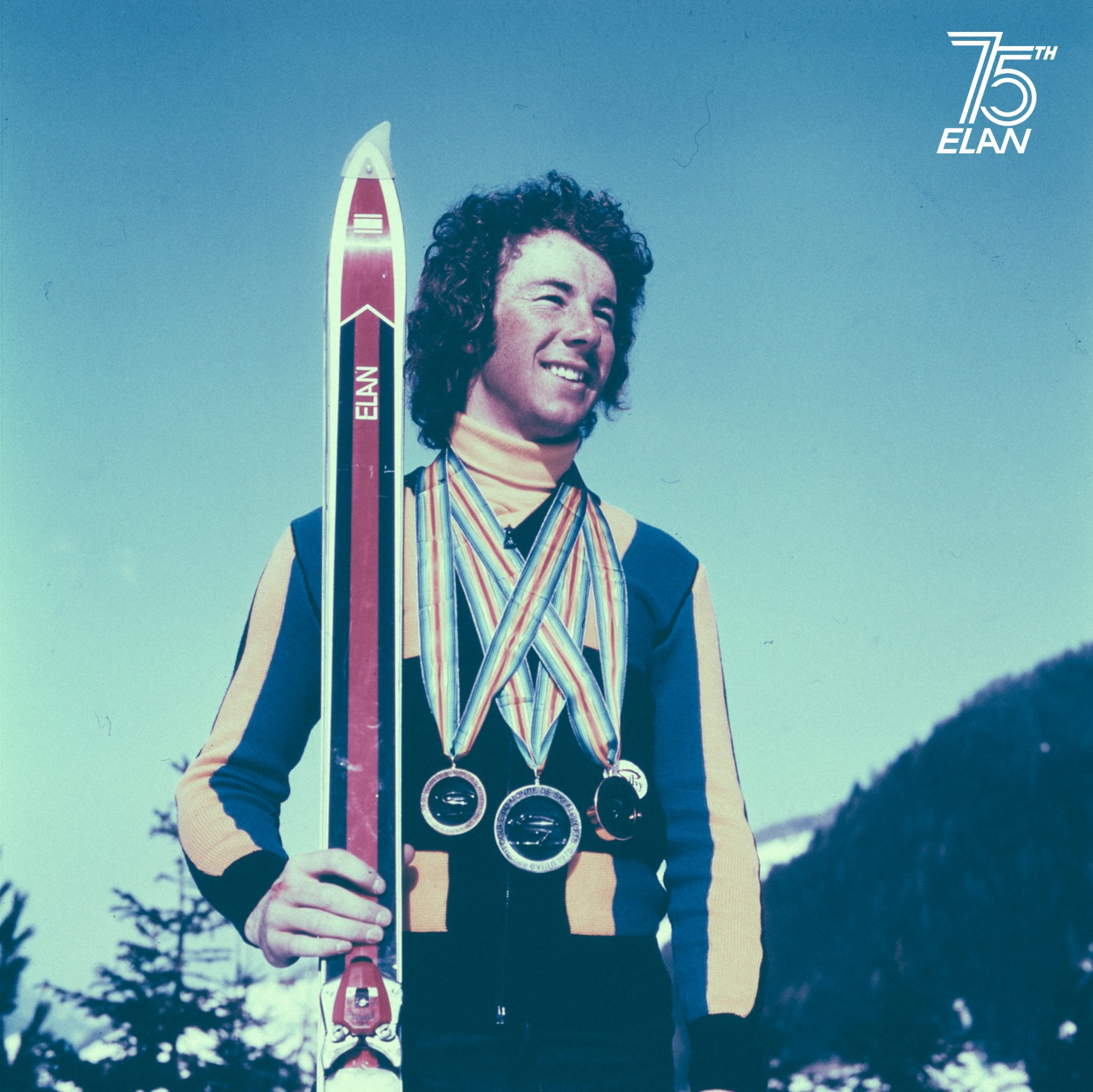
At the World Championships in 1978 in Garmisch-Partenkirchen, West Germany, Stenmark won the slalom by two-thirds of a second and the giant slalom by over two seconds and successfully defended both world titles at the Winter Olympics in 1980 at Lake Placid, which also were counted as world championships. At the next worlds in 1982, in Austria, he had a sub-standard first run in the giant slalom and was upset by American Steve Mahre and settled for silver. Stenmark rebounded in the slalom and became the first to win the same title in three consecutive world championships. At age 25, it was his final medal in a major competition.
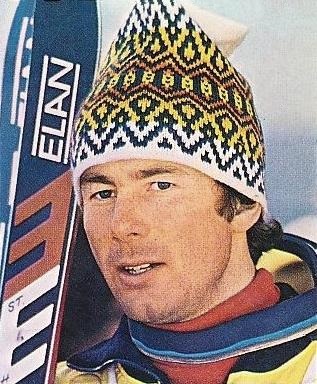
He retired from World Cup competition at the end of the 1989 season in March, days before his 33rd birthday.
During the years from 1976 to 1978 Stenmark, along with tennis player Björn Borg, became a national icon in Sweden. This was not changed by the fact that he moved to Monaco in 1980 for tax reasons.
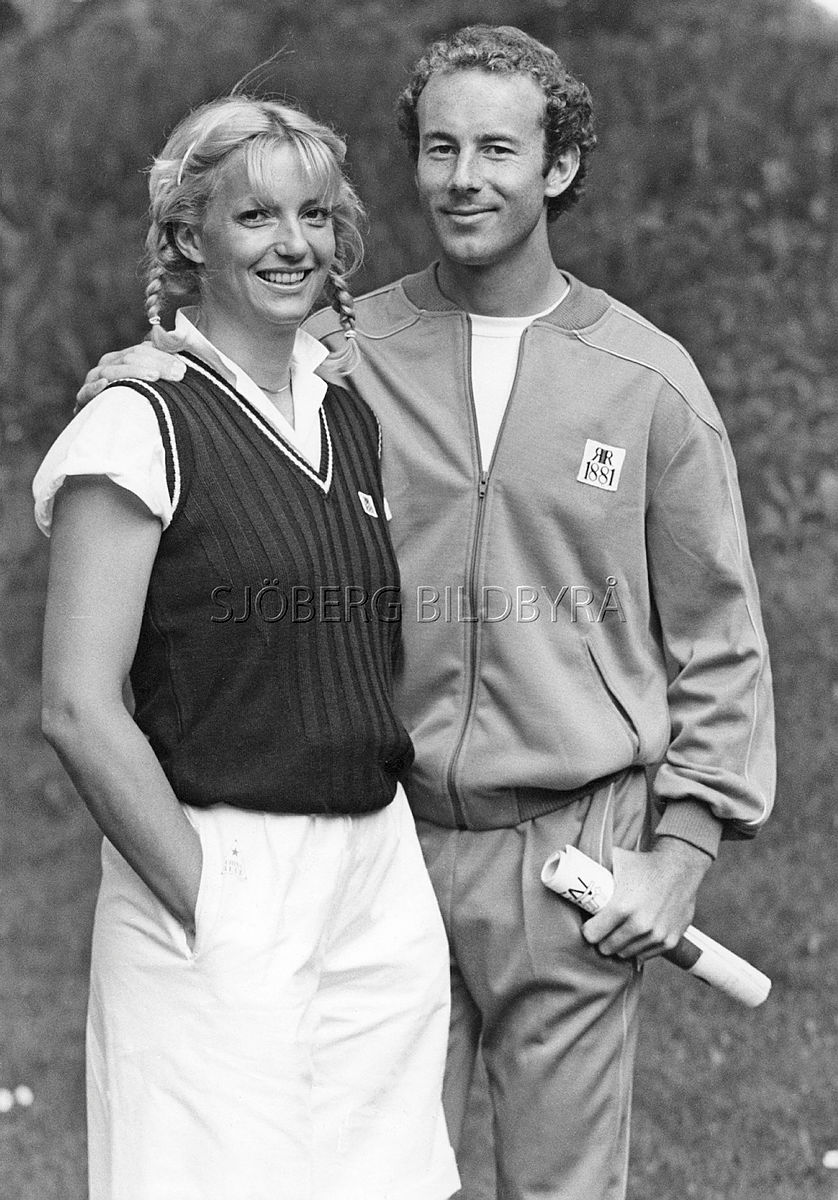
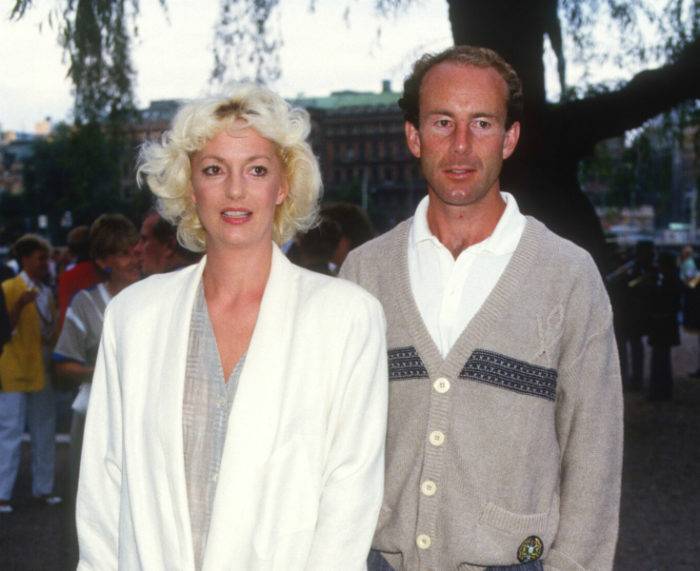
Stenmark was married to Ann Uvhagen, a Lufthansa airline hostess, 1984–1987. They have a daughter, born 1984.
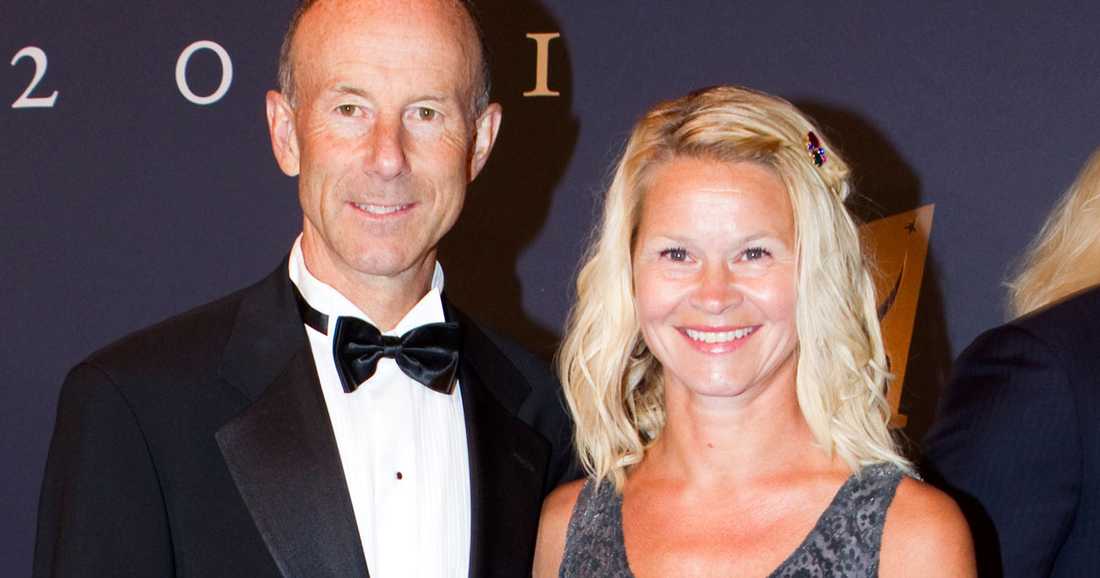
In 2016 he married his girlfriend of some ten years, Tarja Olli from Jakobstad, Finland, with whom he has another daughter, born 2008.
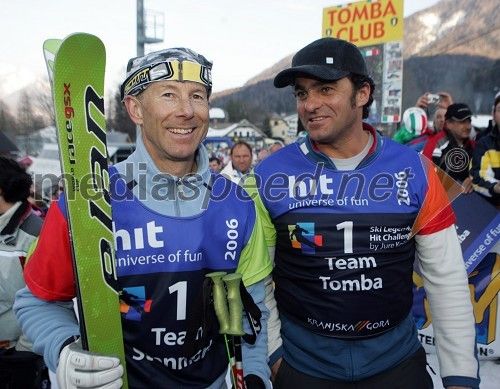
“Stenmark is my idol of the past and even present. In Japan I asked him who was the greatest of skiing, of the white circus, of the World Cup and he replied “Alberto”, when he asked me I said him." Alberto Tomba
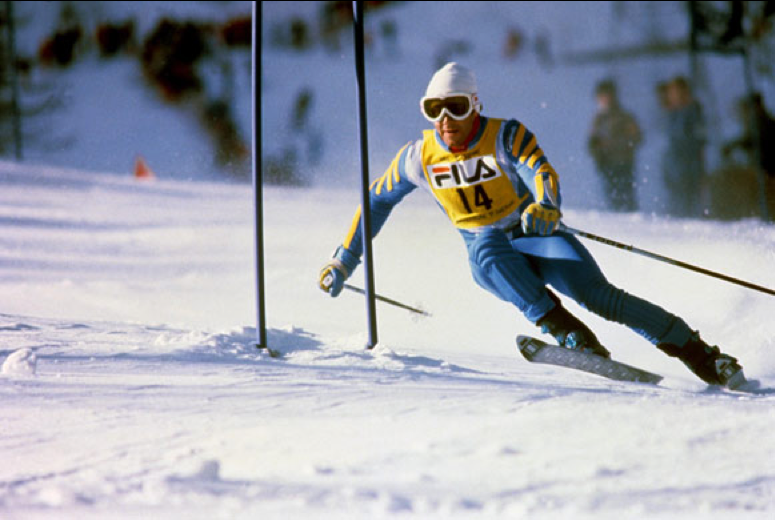
When asked by a journalist about when he realized he had an unrepeatable champion in his hands Ermanno Nogler, historical Stenmark coach, replied: "the first time I saw him, during the first tests with him when he was thirteen, I gave him some really difficult points to solve with late-season snow, bad snow and I saw the incredible adaptability to the terrain he had, motor science, without unnecessary movements but just sensitivity, independence of legs and, after a week, I said to the president: this one here, there is a world champion here." "He wasn't suitable to do the downhill, he didn't want to do the downhill and, if one doesn't want to do it.. But just look at these terrains and one realizes that.., he understands that, here the downhill is not at home because there’s no terrain. And he was a perfectionist and everything he didn't know he didn't want to do."
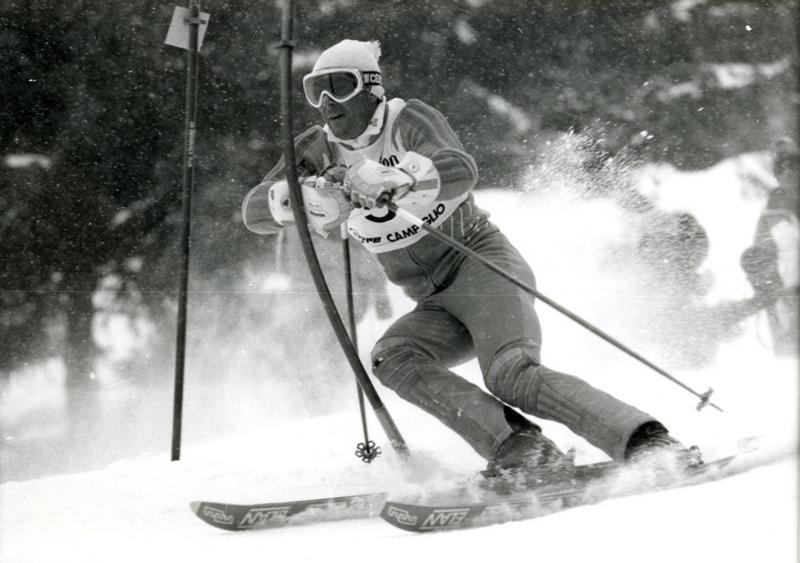
Gustavo Thoeni said: "at some point it became certainly almost demoralizing, we almost demoralized ourselves because we were skiing well and yet we were taking large detachments."

Piero Gros, second after a special slalom won by Stenmark: “unfortunately we, perhaps, didn't understand that he was a great champion. And so a bit of mistakes, a few things that have been made and that must now be forgotten, it’s like he has disoriented us a bit. Instead he is a great champion, I think that, even if you would have killed him, you couldn’t beat him in those years let's say from 75 to 80. I think that, even if we had trained day and night, we wouldn’t have been able to beat him. These are champions who are born like this. An immense class that puts them in front of everyone."
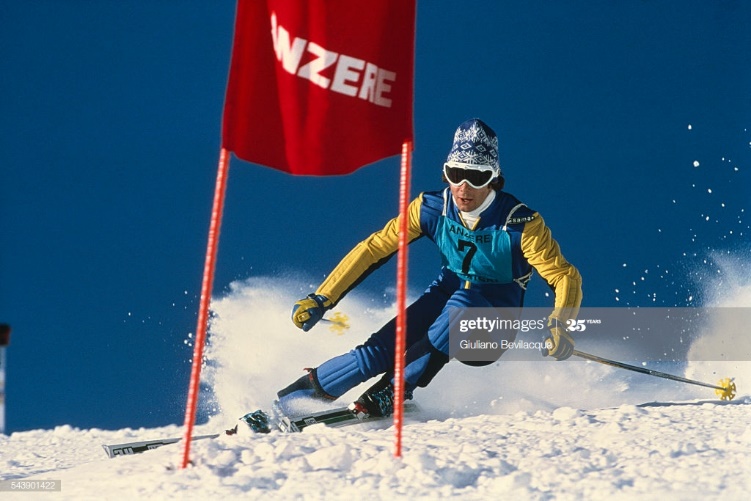
Paolo De Chiesa said: “one of the lessons was, for example, to send us to Livigno to study him on video to try to imitate him, because he was dominating in special and giant slalom at the time. And that was a big mistake because Stenmark, we had to understand it immediately, was really better than all and there was nothing to do, we had to be happy with finishing second or hoping that, every now and then, he would make mistakes and give way to the others."
The world ski monument to the Corriere: «Hirscher and Shiffrin monstrous, but me with modern skis..." by Flavio Vanetti
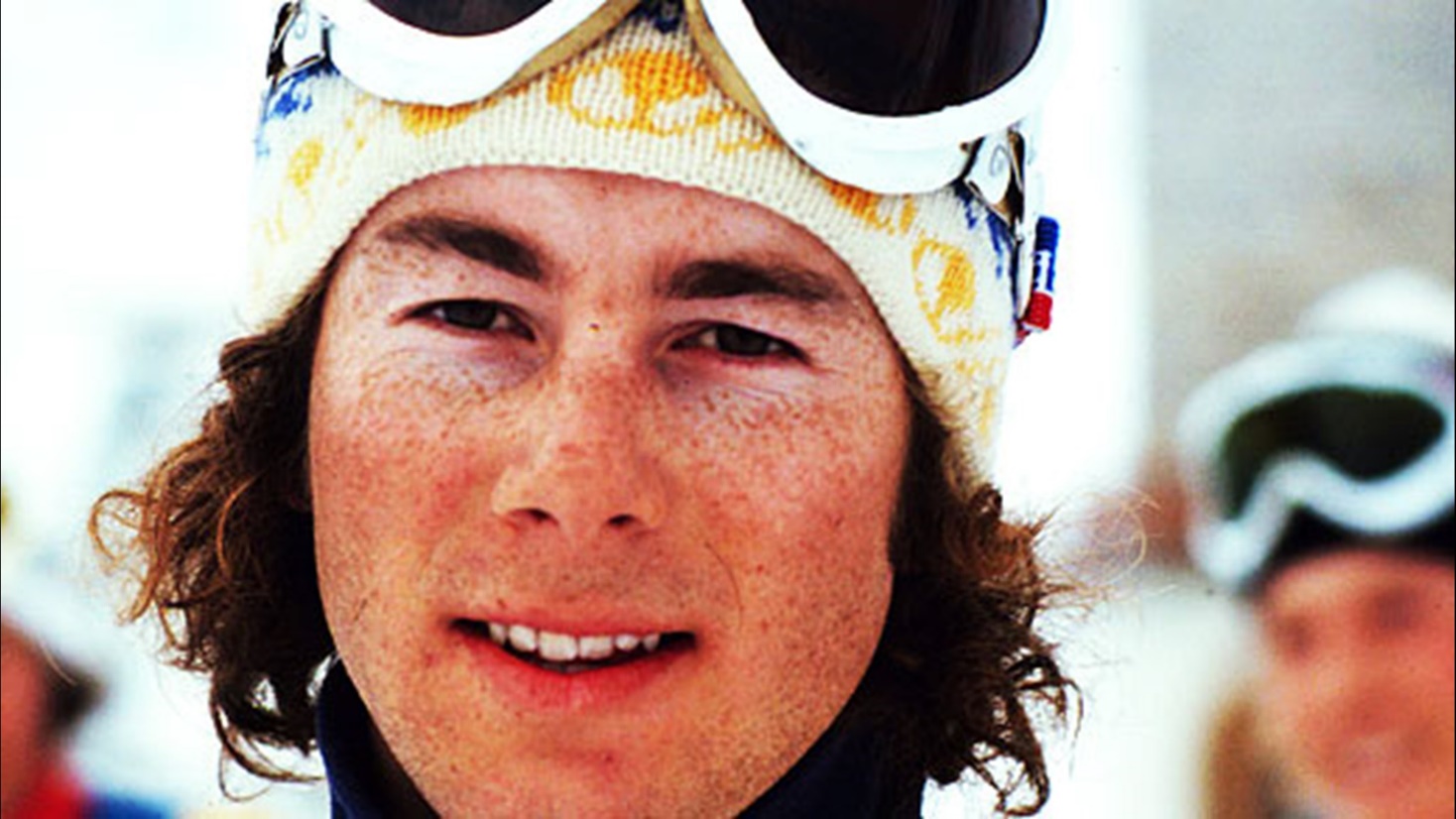
How much is Ingemar Stenmark still loved by the Swedes? It was enough to look at the stands of the stadium of the World Ski Championship in Aare to realize it: they were full, but the fans had come not so much to see the team race, the Team Event, but to attend the exhibition of the «Legends» and to applaud him, an icon of world sport. The time, in front of such characters, seems never to pass. And “Ingo”, 62, before putting on his boots and skis, agreed to talk about today’s skiing and its characters, himself in the present and in retrospect.
Ingemar Stenmark, 86 successes only in the Cup. Are you excited to think that your record, with the farewell of Vonn who got to -4 from you, will remain unbeaten for a while?
«I'm not interested in records today. When I was competing yes but, after I retired, I didn't think about them anymore. It is difficult to compare the present and the past. It is easier to do it for pole vaulting or for running, not for skiing."
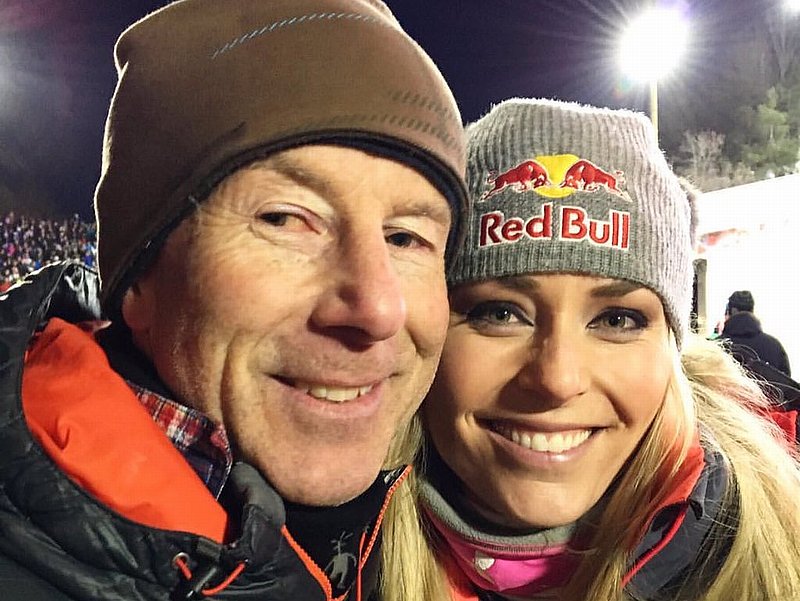
What did you say to Lindsey after the bronze in the downhill?
«Congratulations, fantastic race. And good luck for the future."
Marcel Hirscher looks like today's Stenmark. How do you judge him?
«He is really strong, he has everything you need: physical, mental solidity. Even if he does a bad first heat, then in the second he recovers. And if he misses a race, he doesn’t let himself be influenced by stress. Rather, in the next one he wins.»
Do you still watch skiing on TV?
«Sure. Not all the races but many yes.»
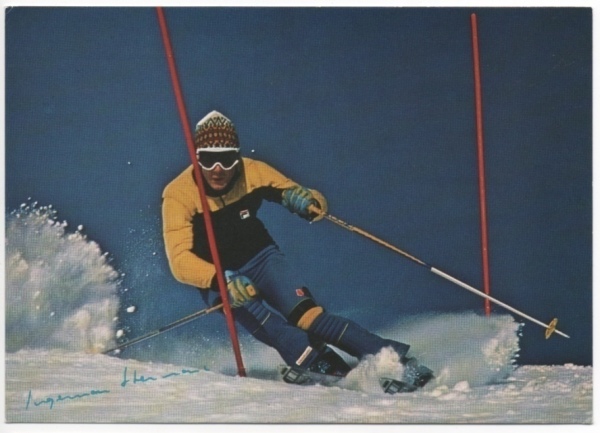
Piero Gros, your former opponent, said you remained a great athlete and that in today's slalom you would take no more than two seconds. Is he right?
“Not so much, I'm no longer an athlete. I'm skinny because of jeans (laugh). I enjoy cross-country skiing, but without heavy training. Alpine skiing, instead, I don't practice it much: my back hurts.»
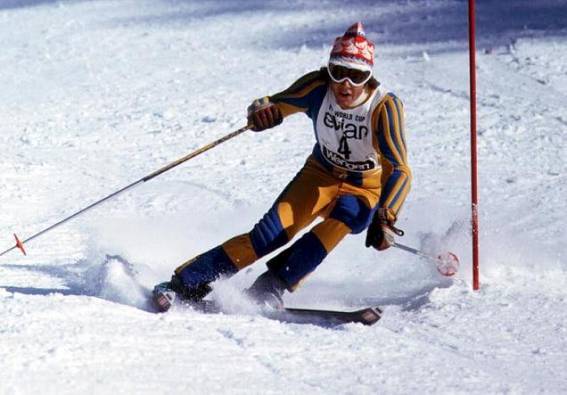
Doesn't it bother you to hear the usual talk about the 86 wins?
«No, it's nice to talk about the record. But I really don't care because I believe that the ages in sport cannot be compared: when someone approaches and interviews me, my name appears in all the newspapers, even those of Los Angeles. Nice, but that's all."
Hirscher and Shiffrin, now that Vonn's threat has vanished, are aiming for primacy. Who of the two will beat it first?
«Both of them will overcome it. I don't know who will do it first, but Mikaela will win more than 100 races in the World Cup. She is just 23 years old and is already at 56 wins out of 78 podiums: a monstrous roadmap.»
Do you remember that parallel of 1975 with Gustavo Thoeni?
"We met with Gustavo three years ago, we talked a little about the past. He was a great one. Of that day in Val Gardena I remember that there were so many people screaming. I was second, but it wasn't a problem for me. An Italian won in Italy: a nice coincidence.”
Are you in touch with Alberto Tomba?
«Yes, a couple of days ago we exchanged a message. But I haven't seen him for quite a few years."
Who is your favourite skier today?
«There are many: Hirscher, Noel, Shiffrin. But my compatriot Myhrer is also good. And then Federica Brignone: I like her style, I told her mom, Ninna Quario, who was blue (azzurra) when I was competing."
And in the downhill who do we mention?
"Dominik Paris: he's really strong."
Did you like the two short descents of the World Cup?
«The weather was bad, they were forced to let them dispute like this. But I'm not the right person to say it."
Did Lindsey Vonn tell you why she cared so much about breaking your record? For Shiffrin and Hirscher, for example, it doesn't count as much.
«I think it was, above all, a way to motivate herself. When you don't find stimuli, thinking of beating a record is a good way to have them.»
What do you foresee for the slalom on Sunday 17 February, closing of the World Cup?
"Hirscher is favourite, but many others can steal his gold. It is a fairly flat slope for a slalom, it could be suitable for Myhrer: after the Olympic title, the world title at home, why not?»
Would you have liked to challenge Hirscher?
"I would have liked to have the opportunity to descend on today's shaped skis and with the current preparation of the slopes. We used skis so long that they were difficult to make turn."
Do you follow other sports?
"Yes, athletics above all. I like pole vaulting."
A parallel made you lose a World Cup. But it seems that this type of slalom is the future of skiing. Do you agree?
«I think it's captivating for the spectators. But making two of them a year doesn't make sense: there should be six or seven. Perhaps the choice of the 16 participating must be changed: this way sprinters have no chance. And then, with the double gates, the taller and stronger skiers who can break them down are favored. I am in favour of double gates but lower and asymmetrical, like those of snowboarding.»
Do you think skiers have too much pressure today?
"I think so. There are the interviews before, during and after the race and then there is the award ceremony, the assignment of the bibs. Too much."
What would you change in today's skiing?
"I don’t know."
But do you like it?
"Yes. I don't think we should change it too much. There are a lot of spectators in Kitzbuehel. It depends on where you compete."
Is there anything else that has changed compared to your days?
«Snow preparation is better today. Now with the bib numbers over 30 you have many more possibilities and then the skis are very different. All sports are evolving: they used to go pole vaulting with bamboo sticks and play tennis with small rackets."
Did you think Vonn would have gotten your record?
"Yes, I thought she could do it."
But did she do well to retire? Wouldn't it have been better for her to keep fighting for a while until she could have managed to undermine you from the top of that ranking?
«She made a good choice. There comes a moment in your career when you have to take care of your body: if it can't take it anymore it is difficult and dangerous to continue.»
After your victories in the World Cup, the FIS changed the rules for awarding points to make the races more interesting. Today Hirscher has won seven absolute trophies and the eighth is already in the safe, given the huge advantage he has over the second: is it appropriate to do something?
"I was thinking about it, in fact. Why don't they change the rules? Before, Austria wanted to modify them, why it no longer wants?"
Why don't you show up often at races?
«It's different for you journalists, it's a job for you. I would come as a spectator and I don't like it. It's nice to come every now and then, but of being a spectator I get tired.»
What do you think when you look at your medals?
"When I was competing they were important, now I have another life. I like skiing, but I don't think about my career. I love being with my family, traveling.»
Do you still have the competitive spirit?
“I missed it for a year after retiring. I missed the adrenaline. But then not anymore.»
Is it true that you trained by walking on a rope between two trees?
"No. I did it just to learn. I know that skiers from other countries did it.»
Where did your extraordinary style come from?
"I had a good relationship with the snow, I knew how much pressure to do with the ski and I adapted well to the different conditions of the track."
Then the folding poles came. You didn't like them very much.
"I liked them at the beginning: in fact I won the first race of the new era. Then the Austrians understood how to break them down with one arm, Petrovic started to break them down with two arms and started to win always. I was not able to do it.»
Ingemar Stenmark said:
“I don't know anything about luck but that the harder I train the luckier I get.”
“I ski to win. To win, I have to get angry. My anger is directed at the course, at attacking it and beating it. When the day comes that I can't get myself into a fighting mood anymore, I won't be able to win and I'll stop racing.”
"I tried to do the downhill but I gave up when I saw that the girls beat me..."
Tomba and Stenmark, a meeting between legends in the heart of Madonna di Campiglio. And wonderful stories have emerged... Tuesday 3 March 2020.
A meeting in the heart of a location that has marked their respective careers. Alberto Tomba and Ingemar Stenmark in Madonna di Campiglio, together for a few hours during the white week of Carnival.
Not a real organized event; the first to arrive was the Swedish champion, for a holiday with the family and with the usual low profile that distinguishes the skier with the most victories in the history of the World Cup.
It was the first time of Ingo, since the days of his retirement from competition, in Campiglio and on the snow of the Canalone Miramonti, where he won more than in any other cup stage (eight times, including five in slalom and three in giant) and took, on December 17, 1974, the first of his 86 pearls in the maximum circuit. "The track is steeper, even too much for me now, smiled Stenmark, wider and with a much larger arrival parterre."
Then, at Cascina Zeledria, the meeting with Albertone Tomba, who returned to Campiglio a couple of months after the World Cup race which saw, on January 8, the champion from Bologna among the super guests. And the stories have been a thousand, between two absolute champions of this sport. What they said, however, will remain among them ...
Videos
Alberto Tomba
Ingemar Stenmark
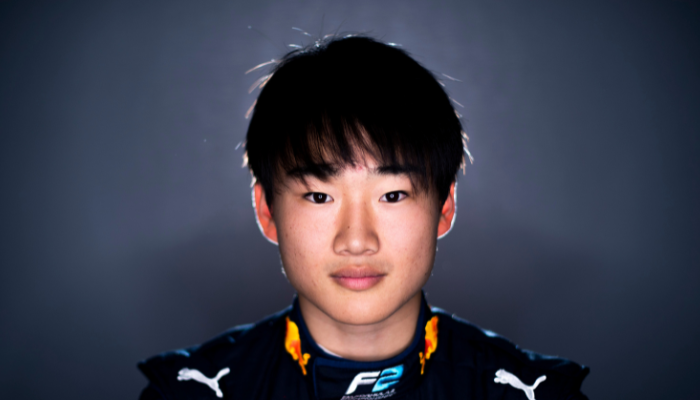
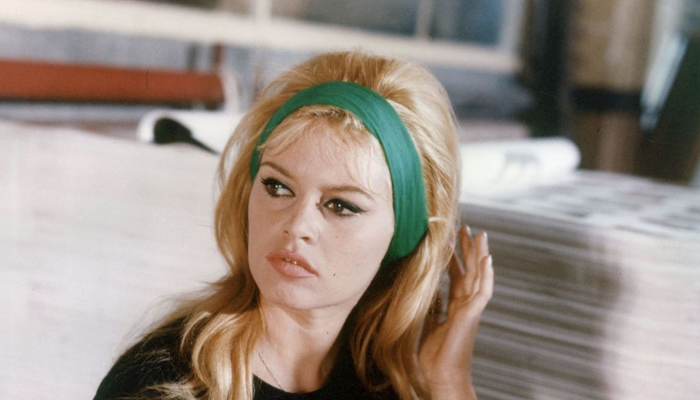
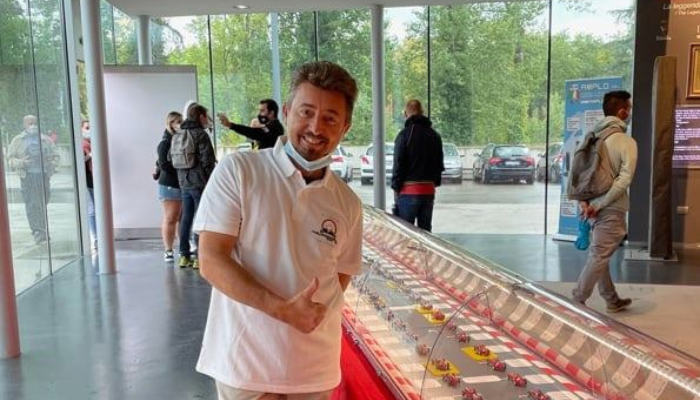
Comments
Authorize to comment